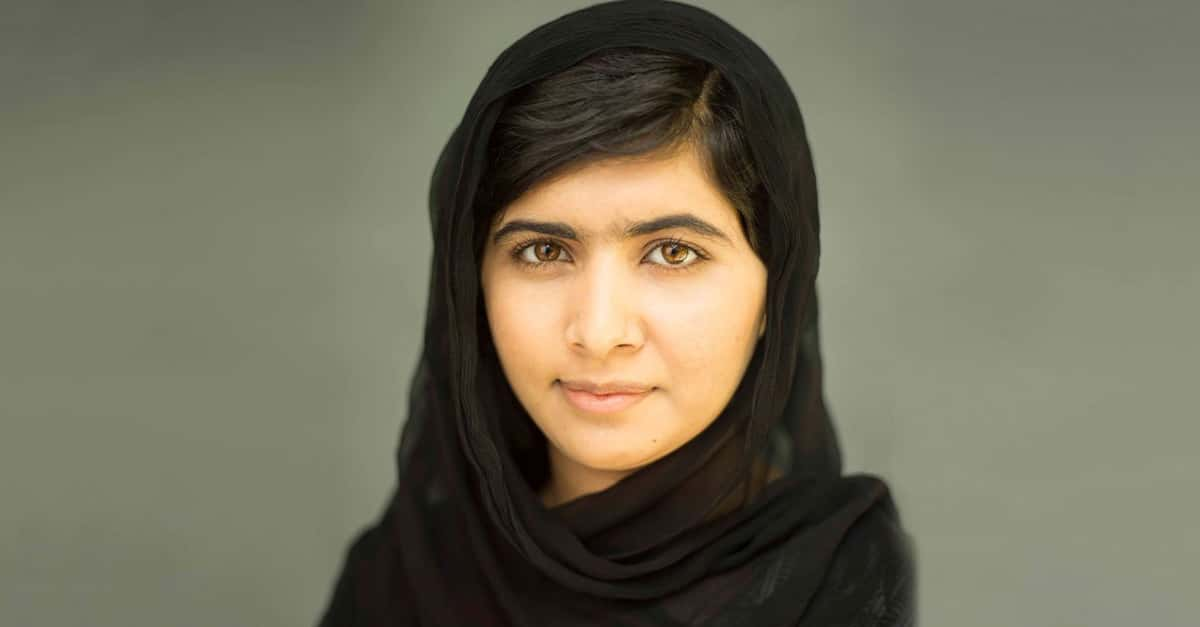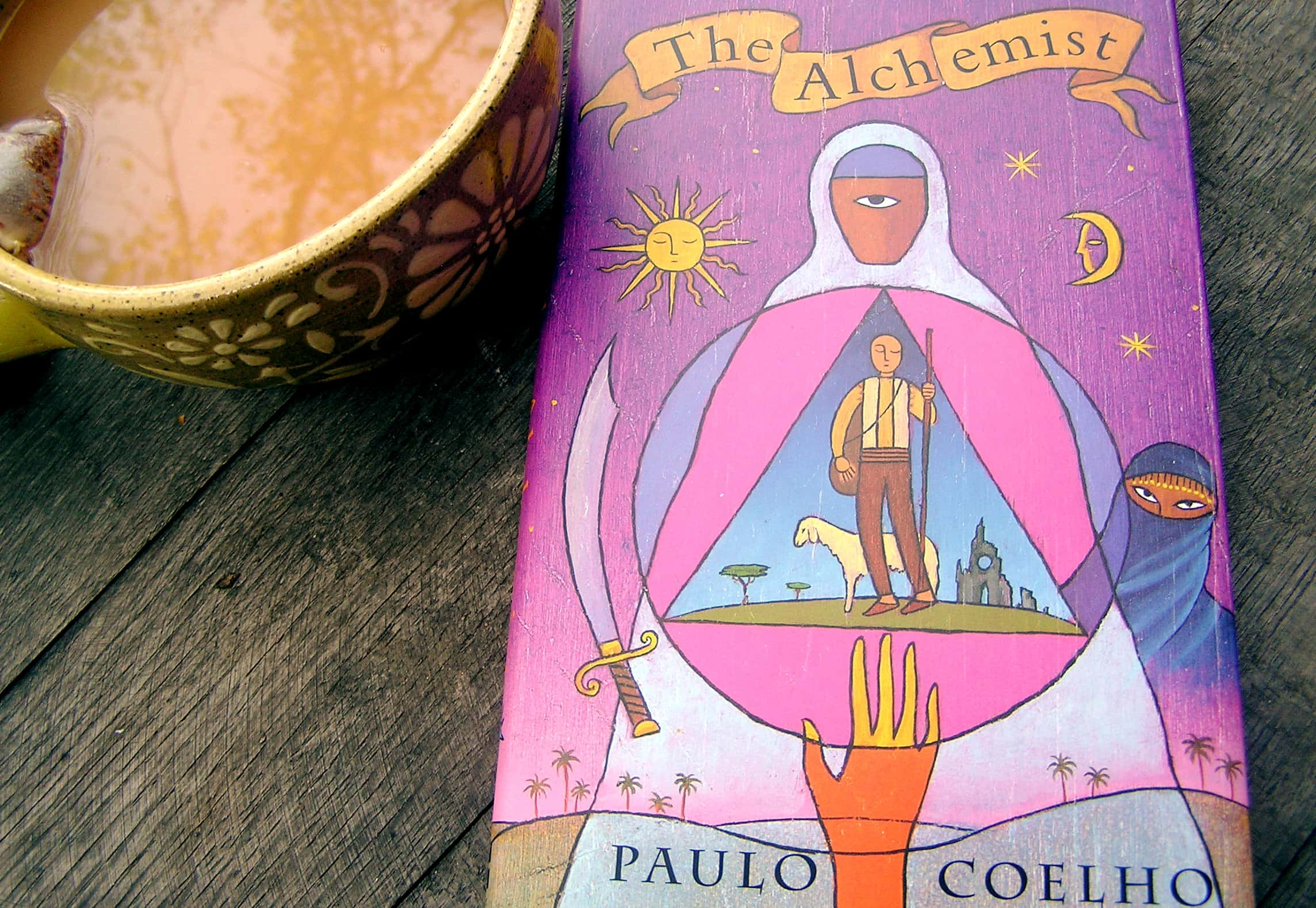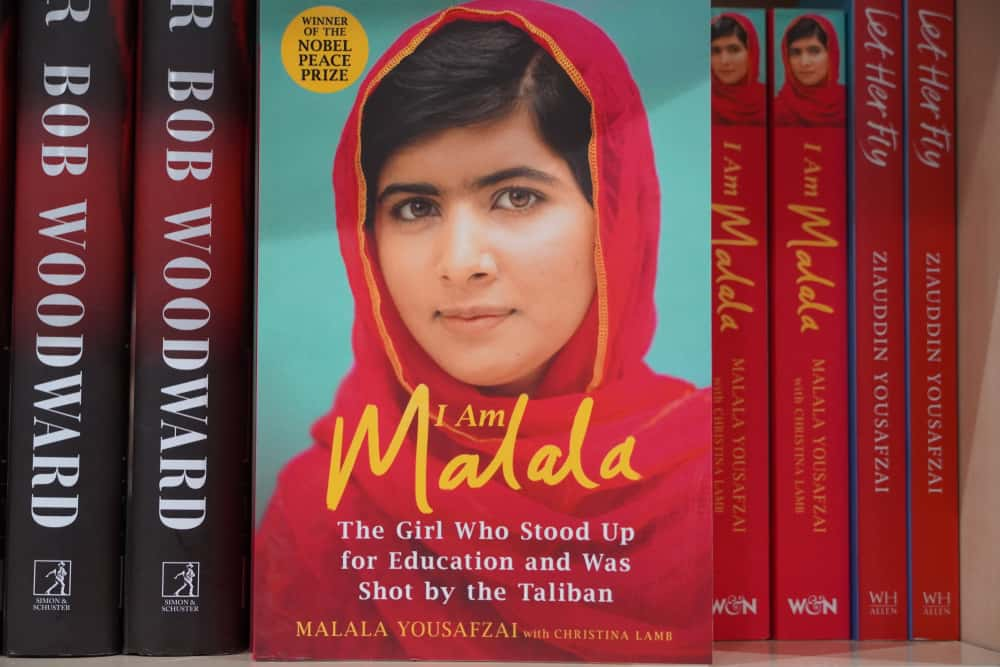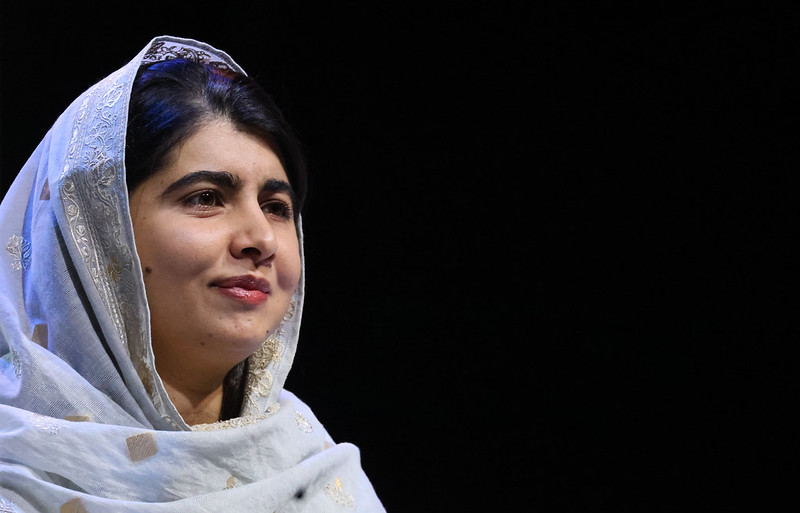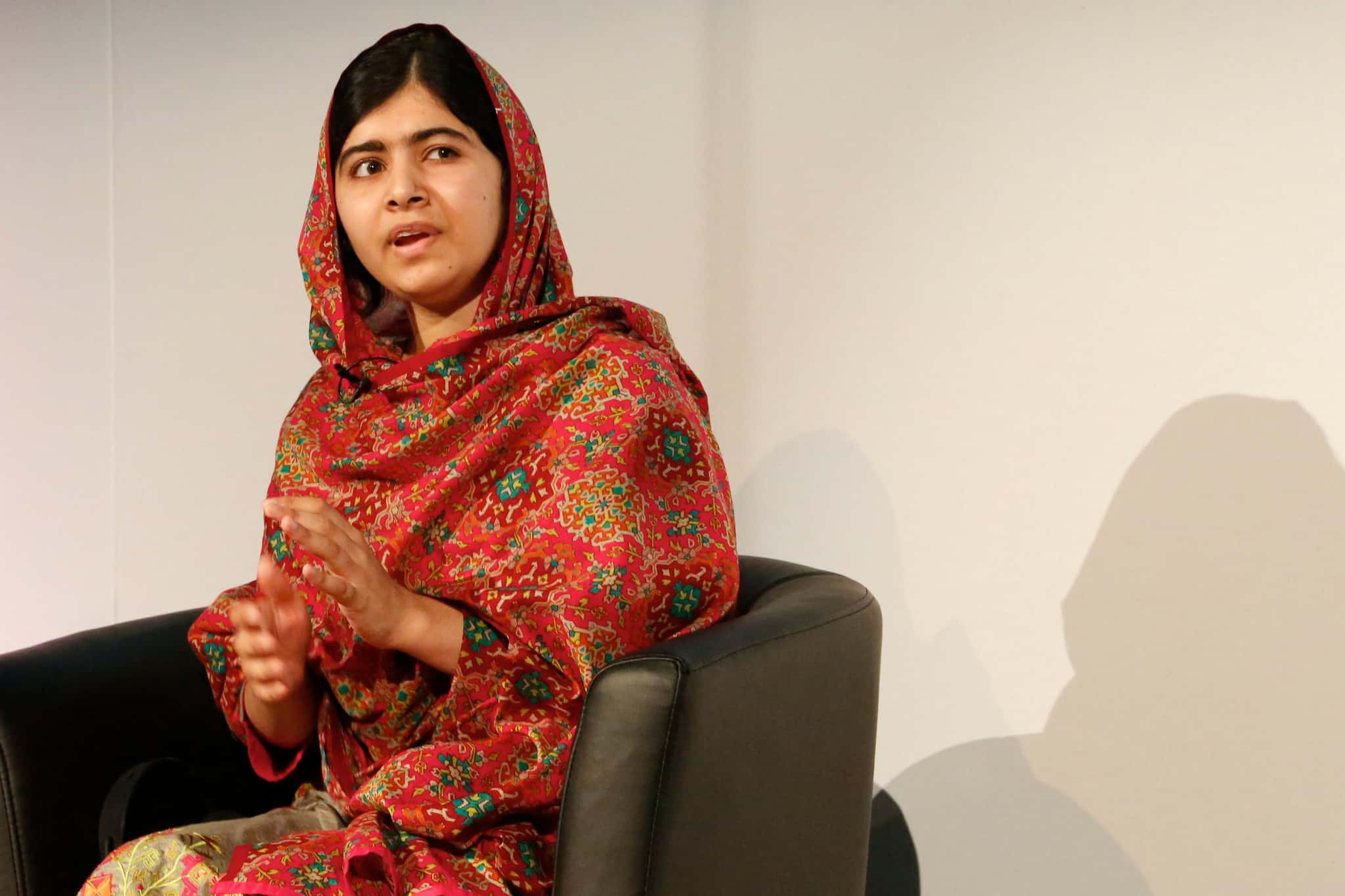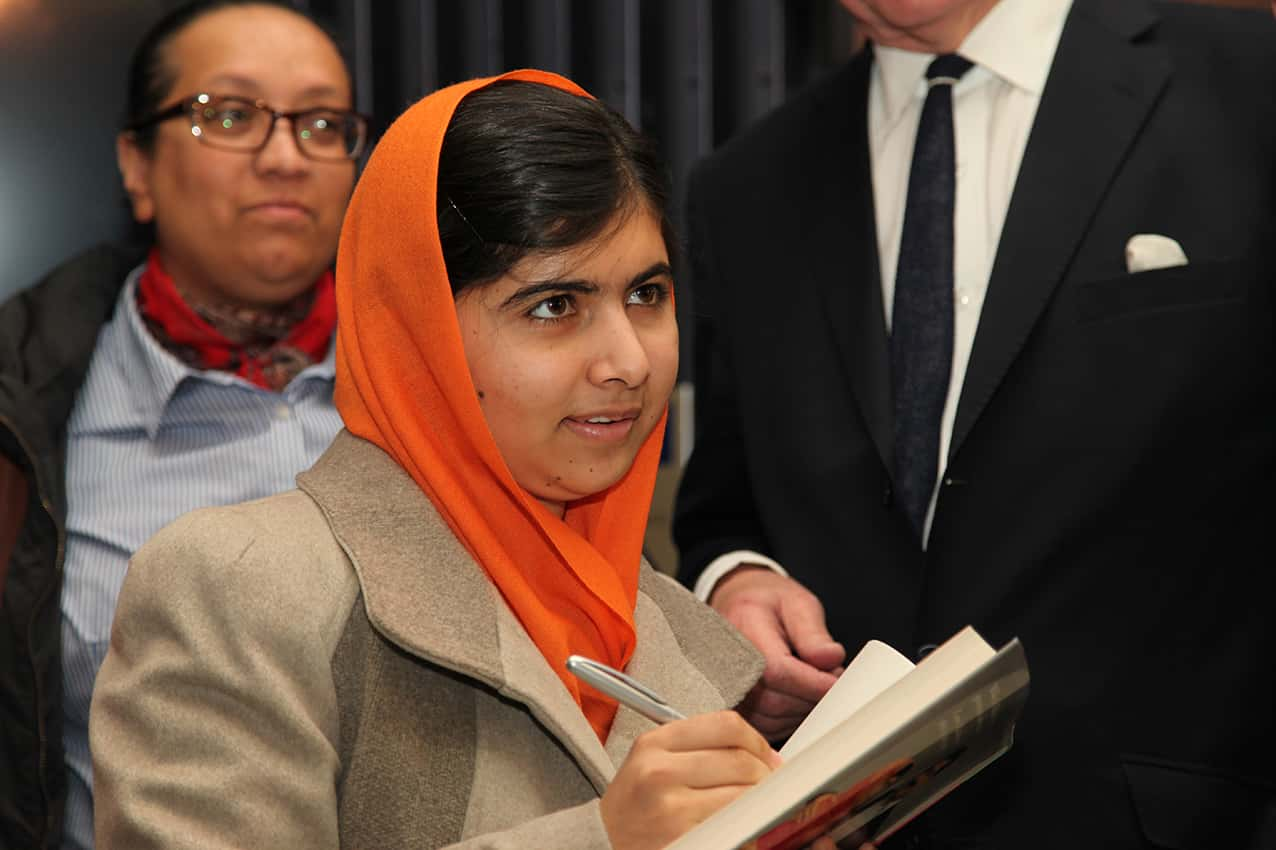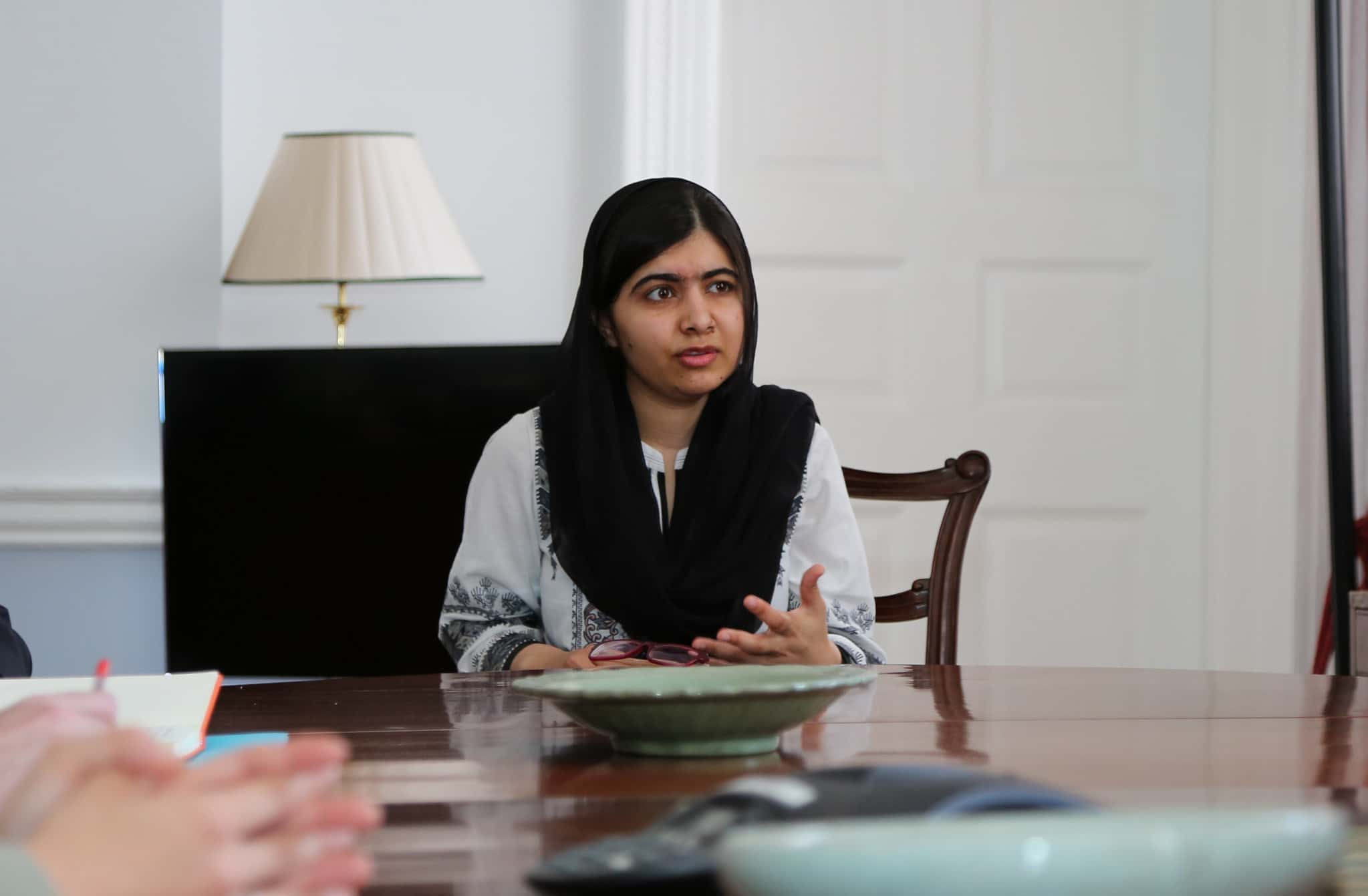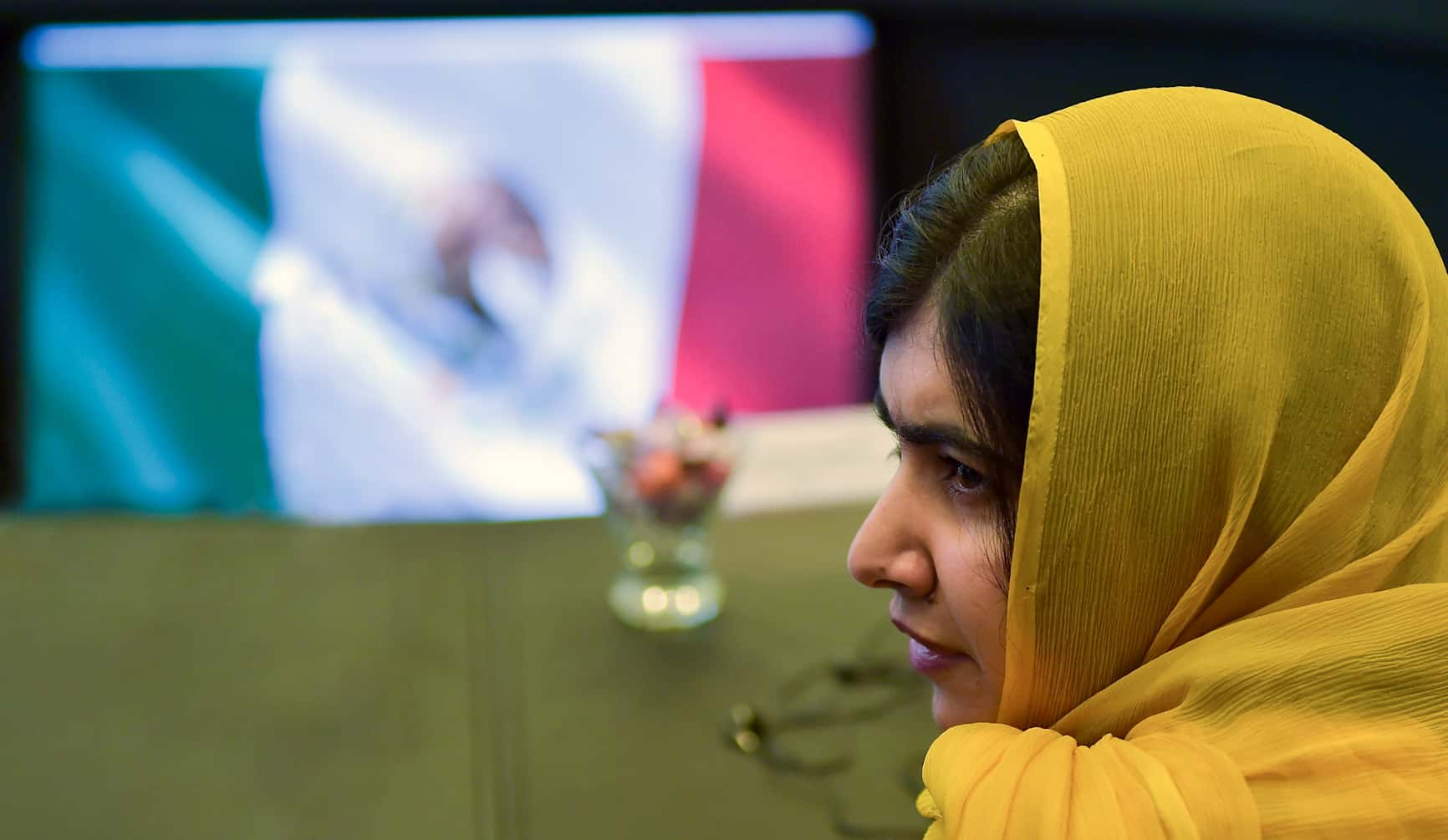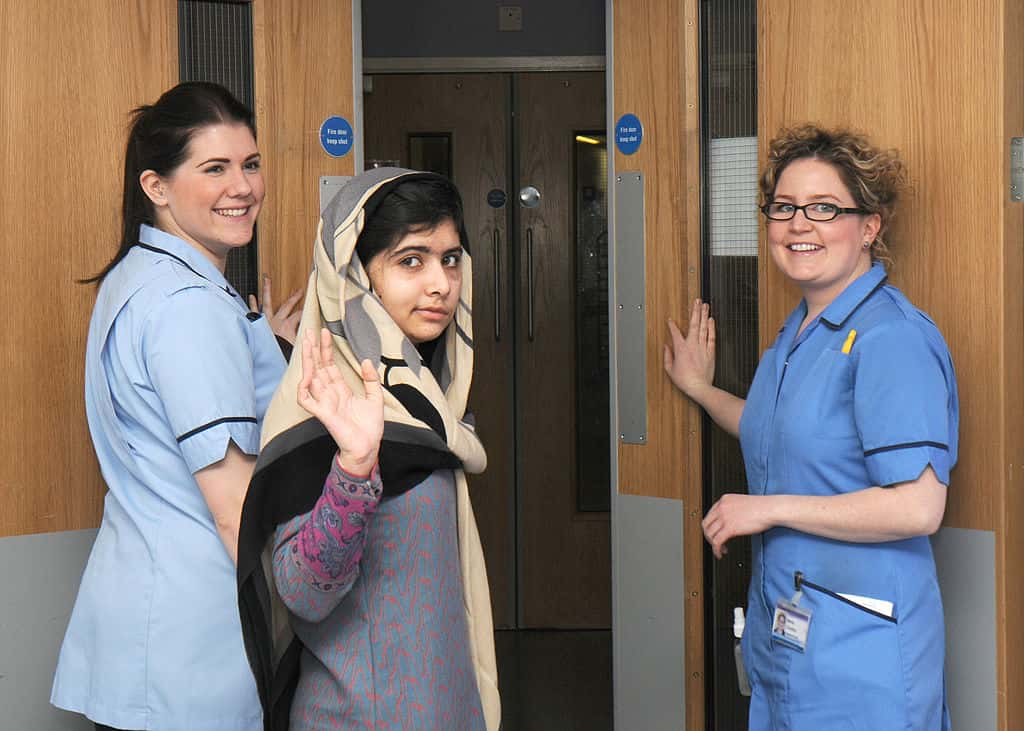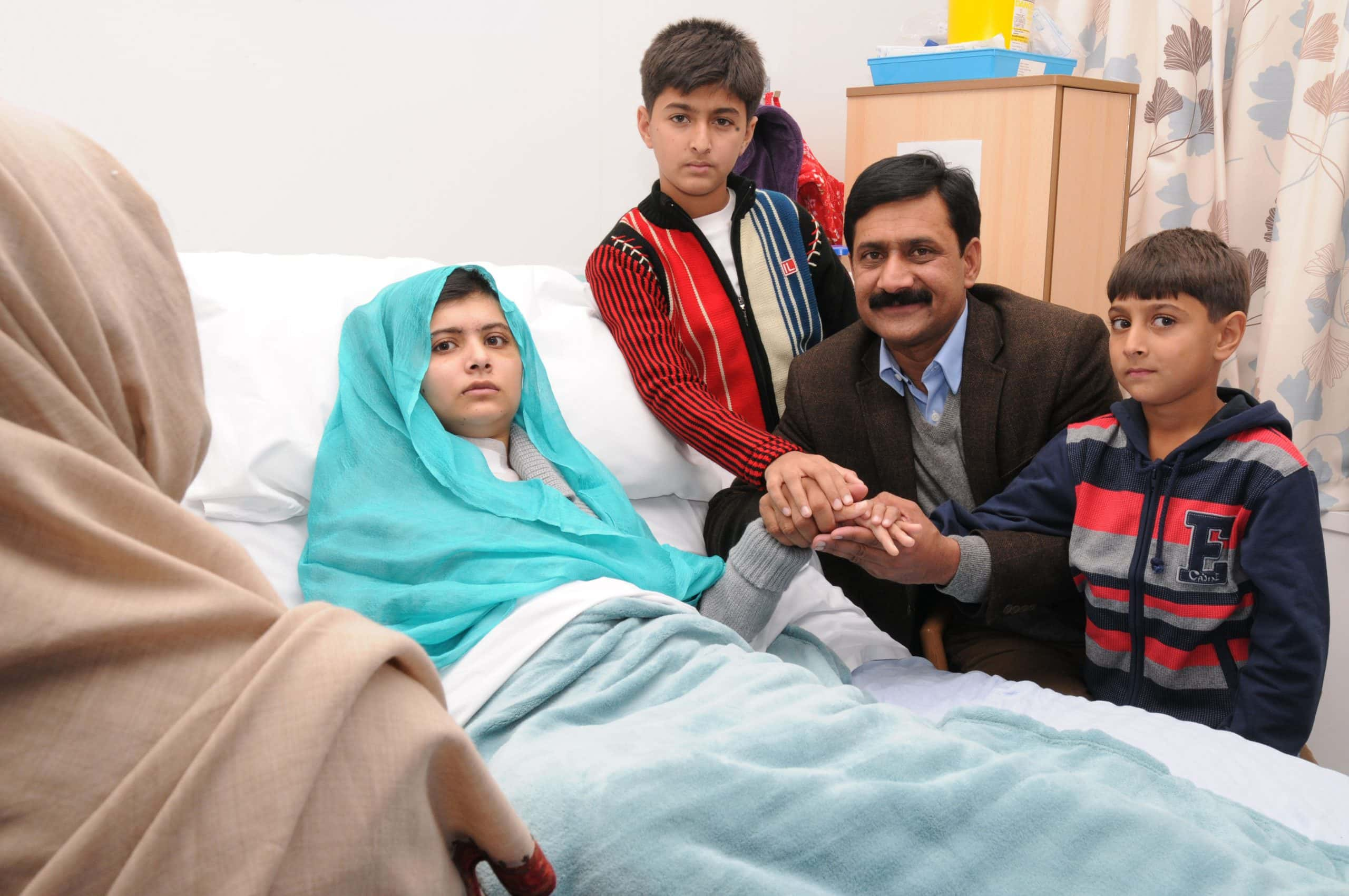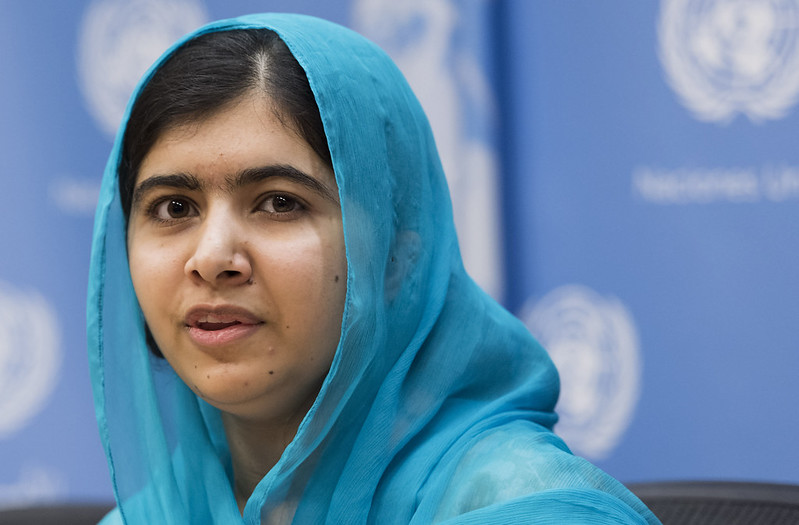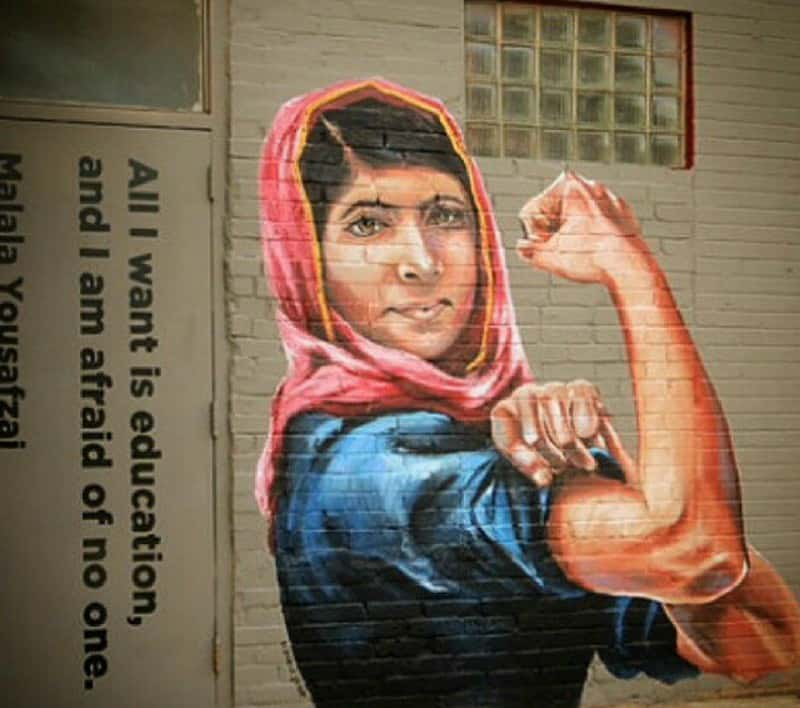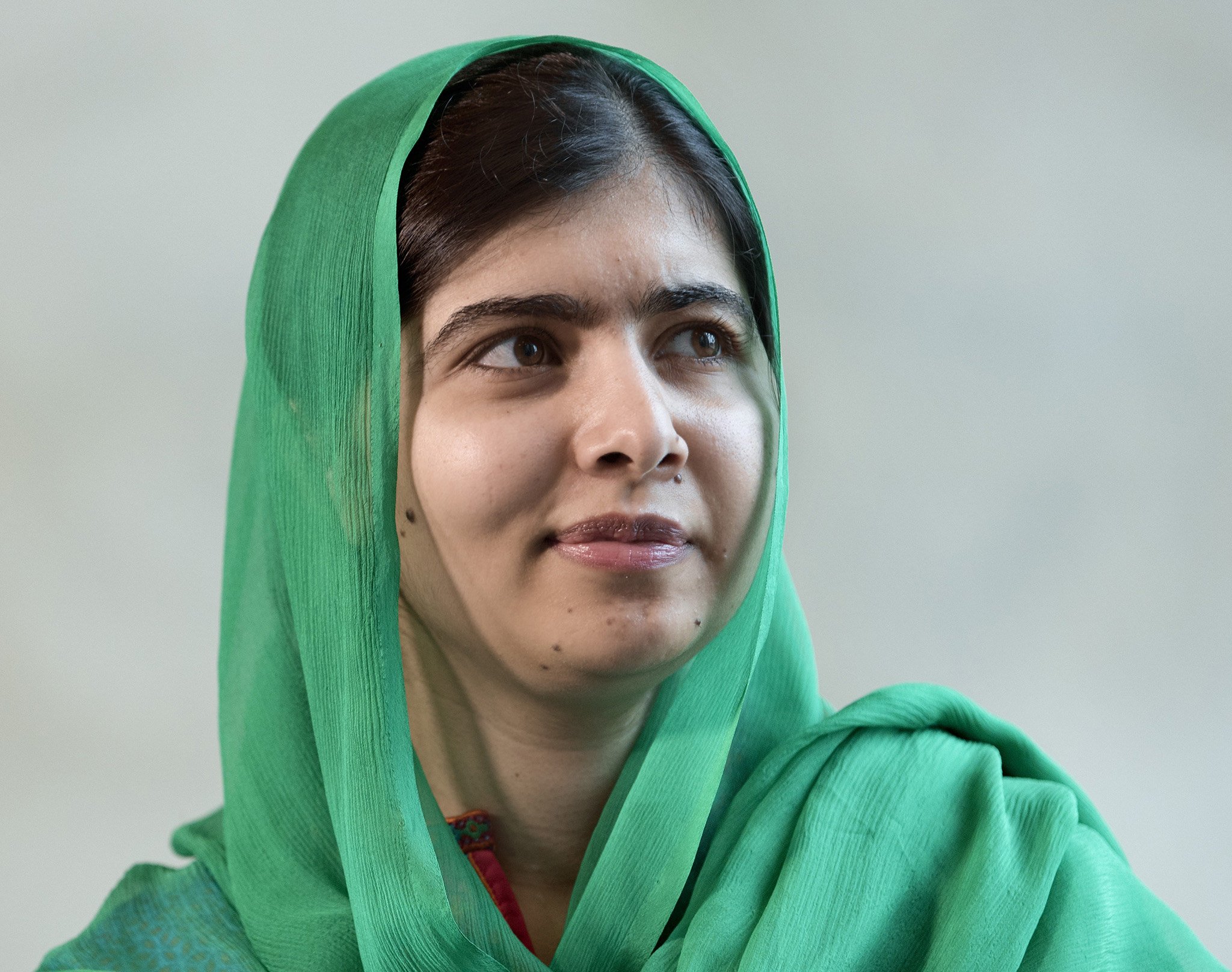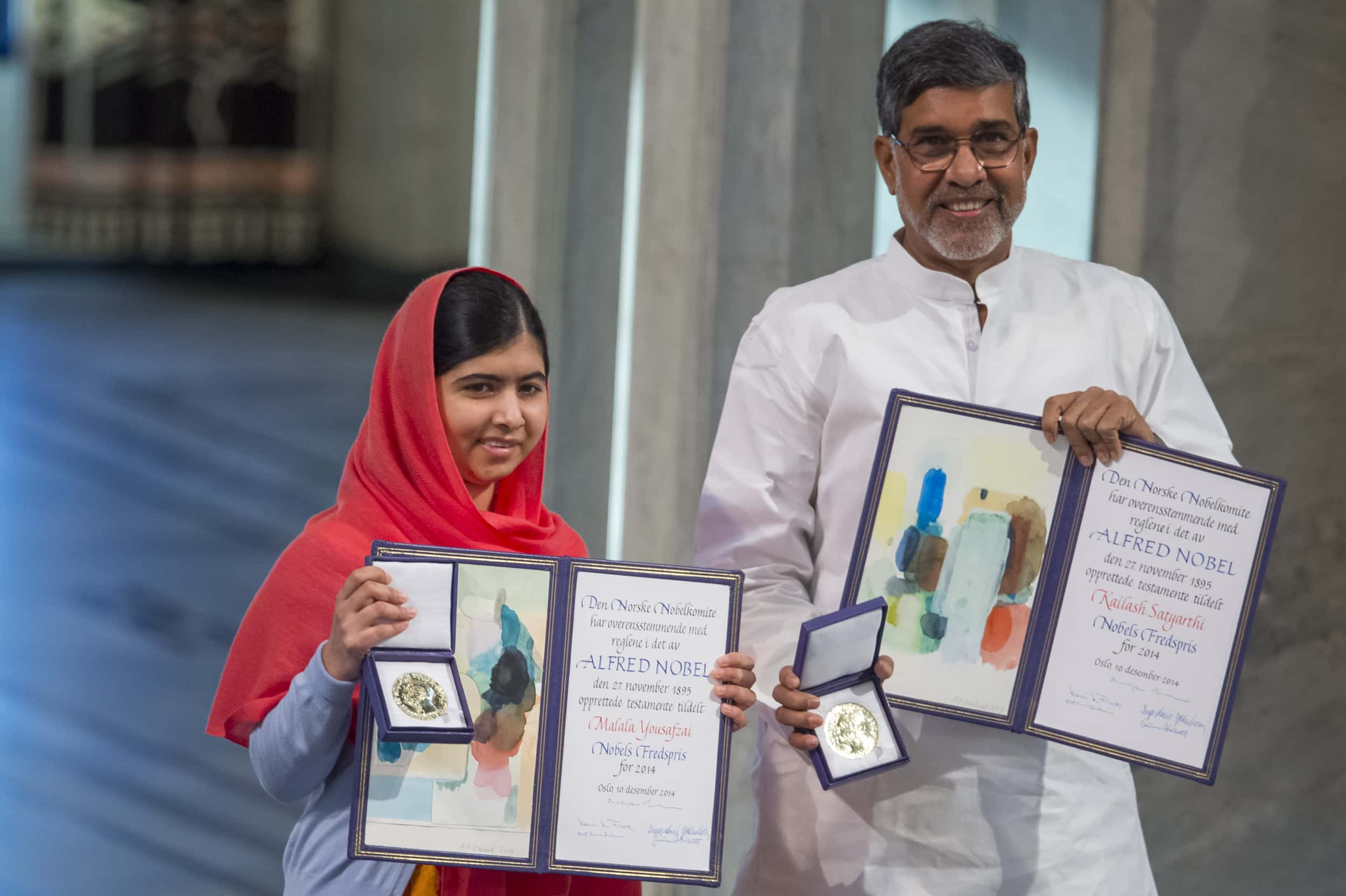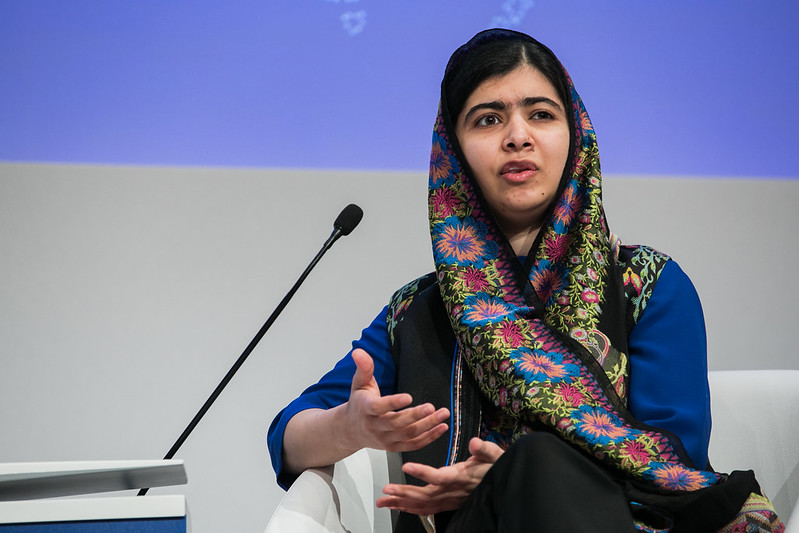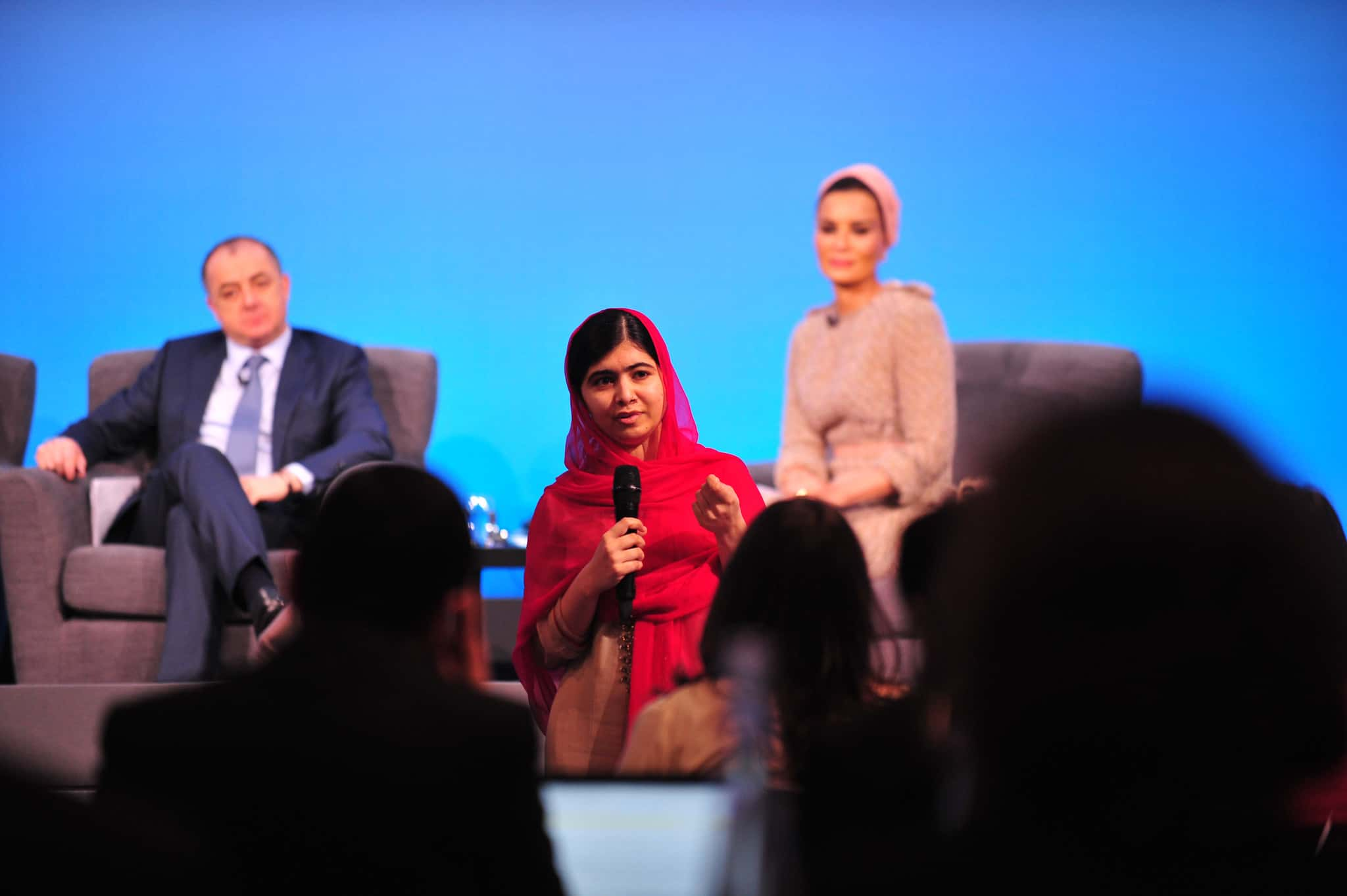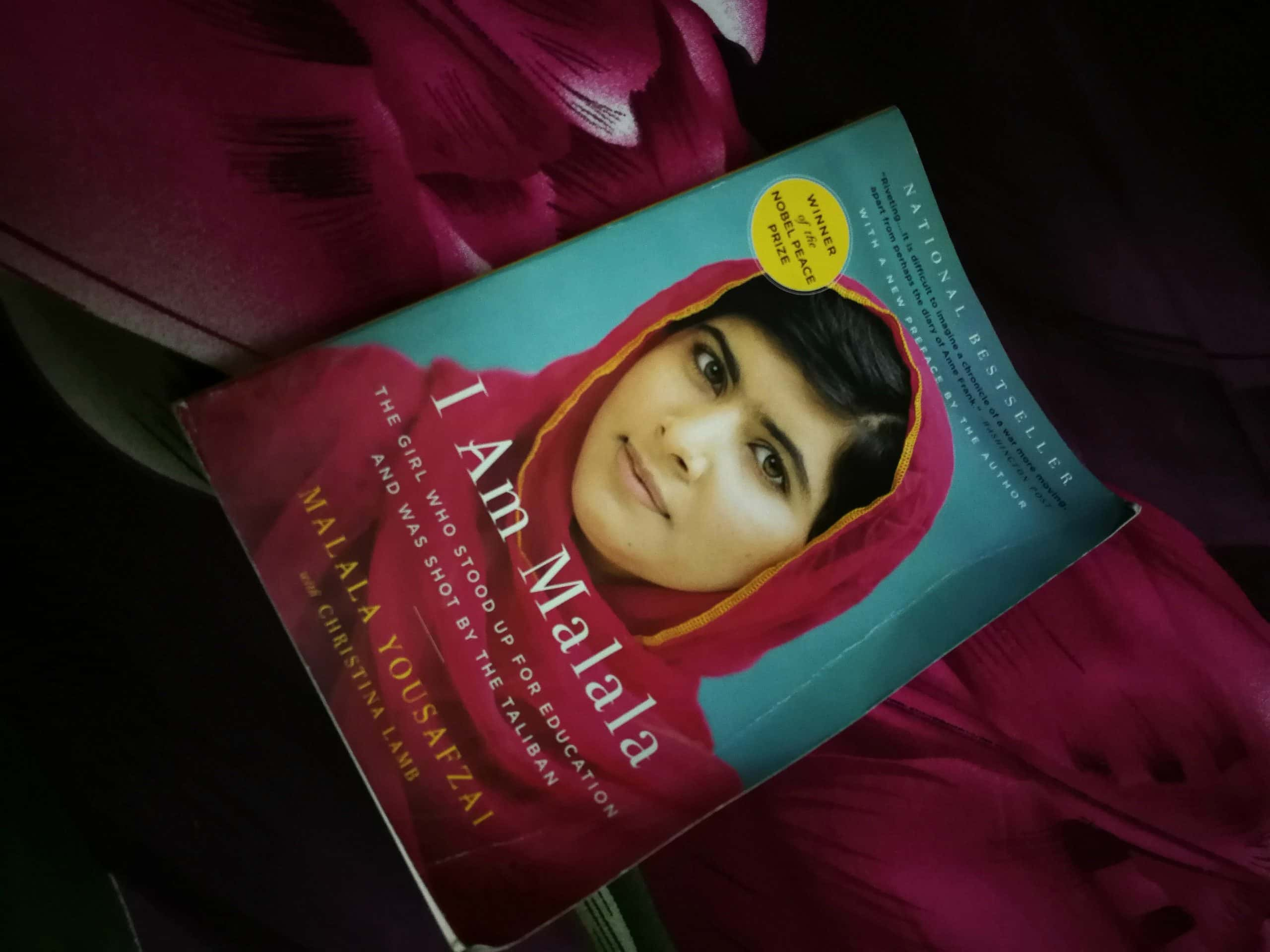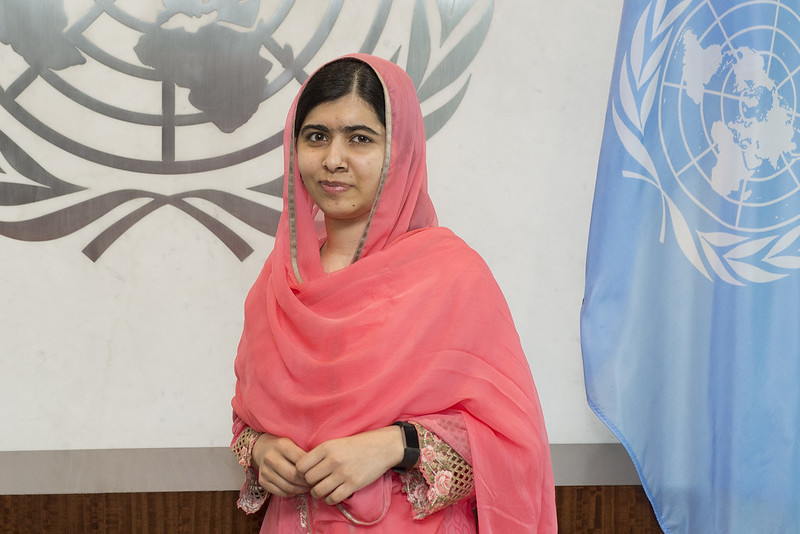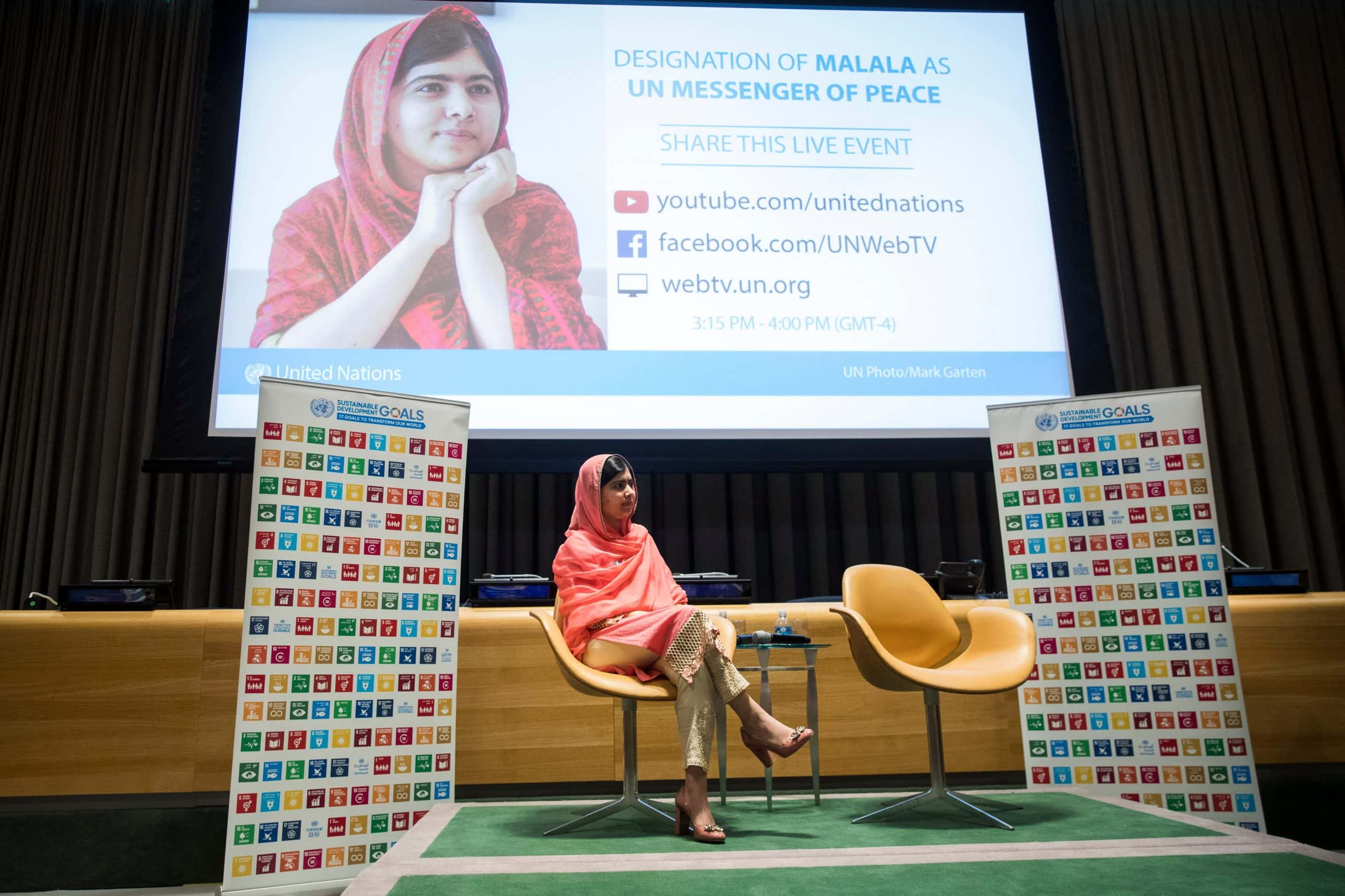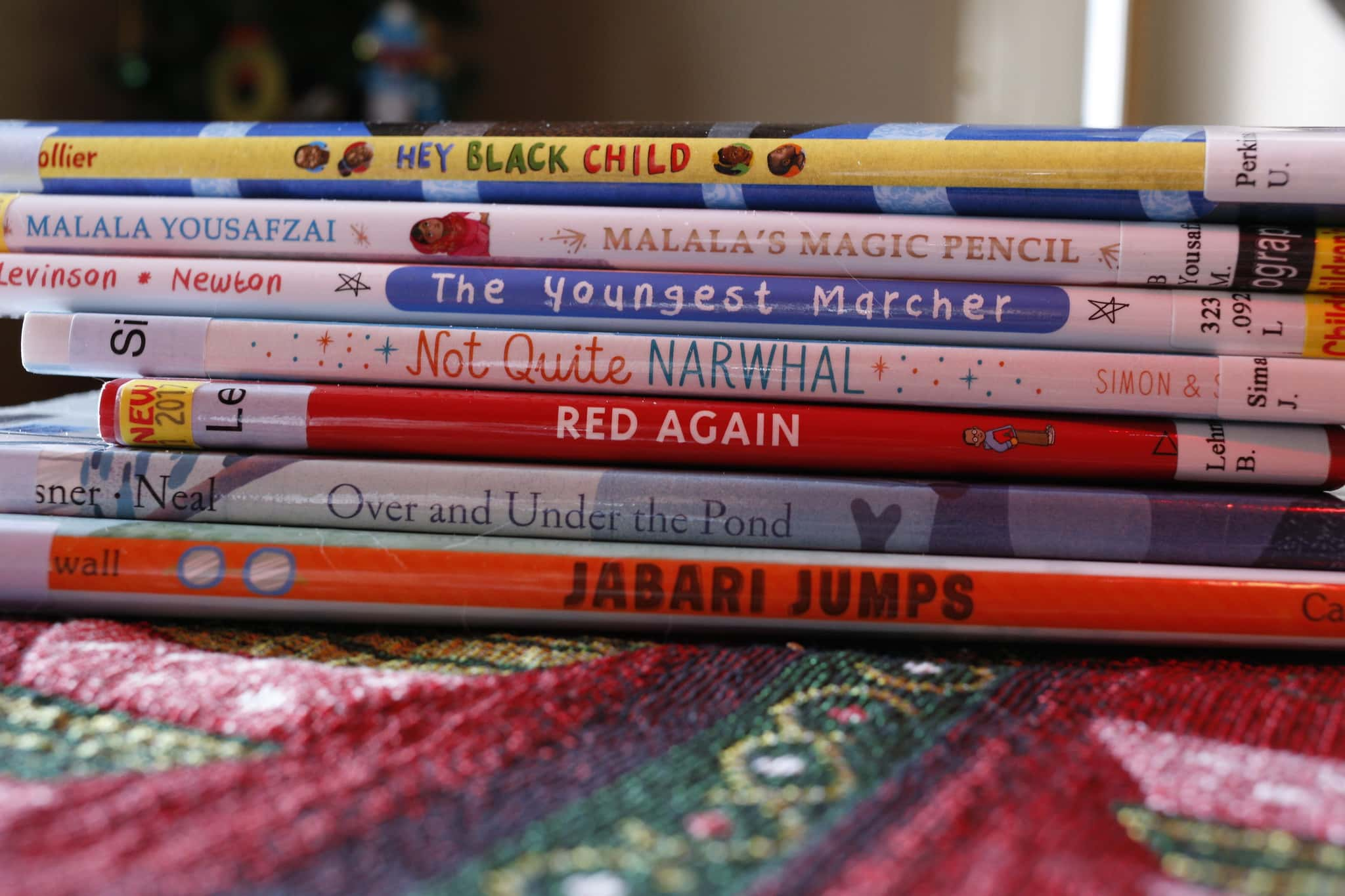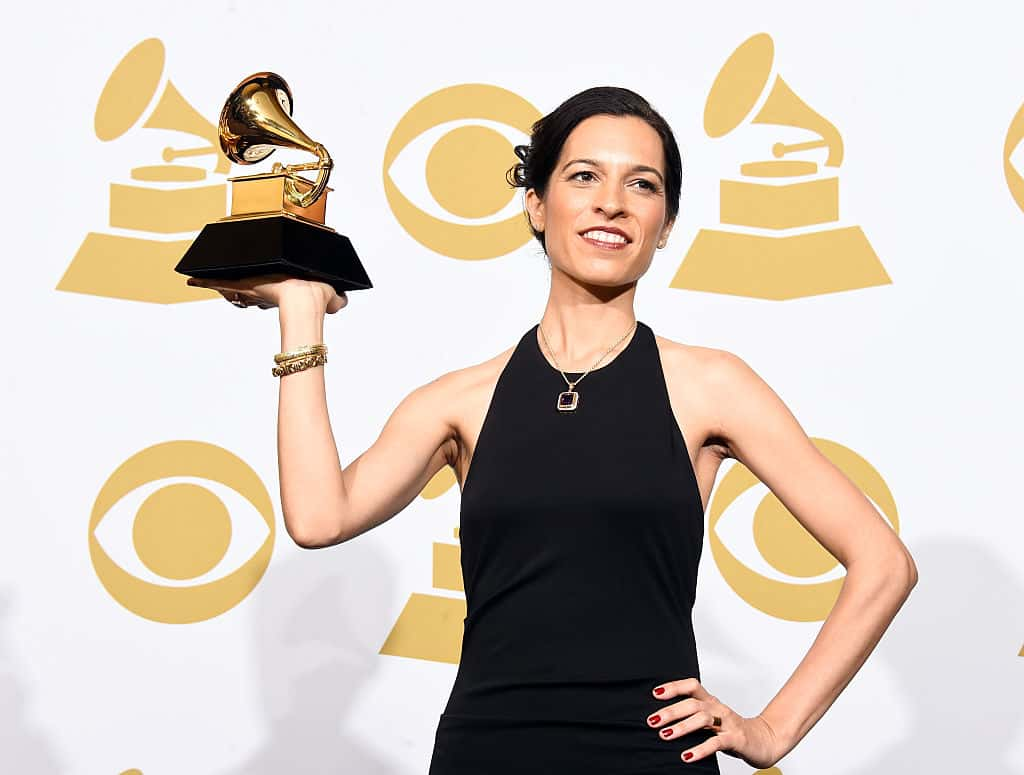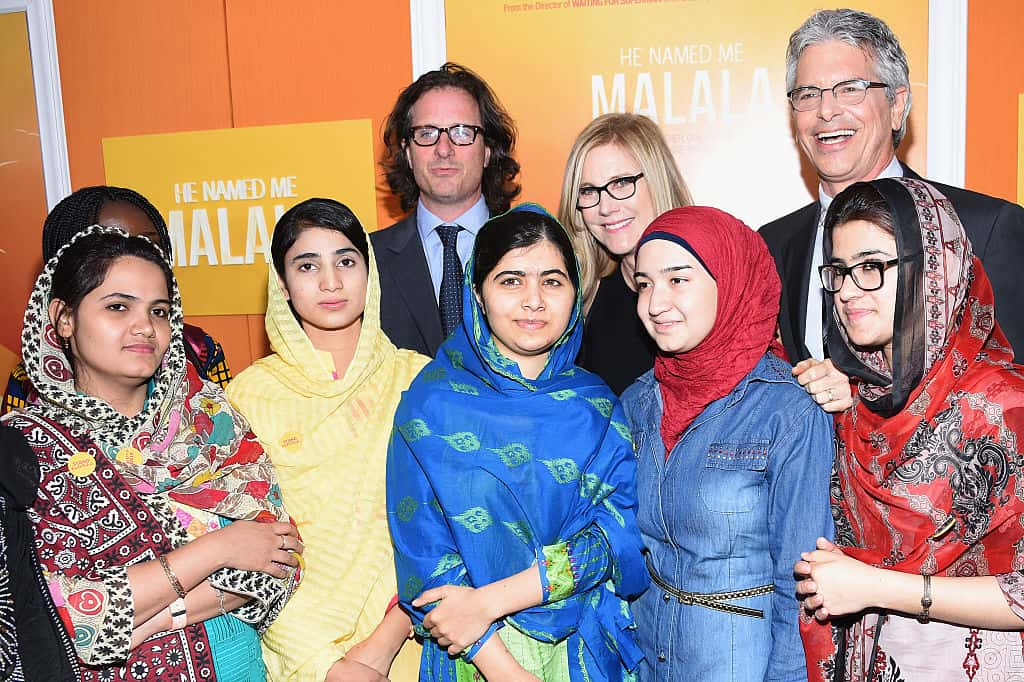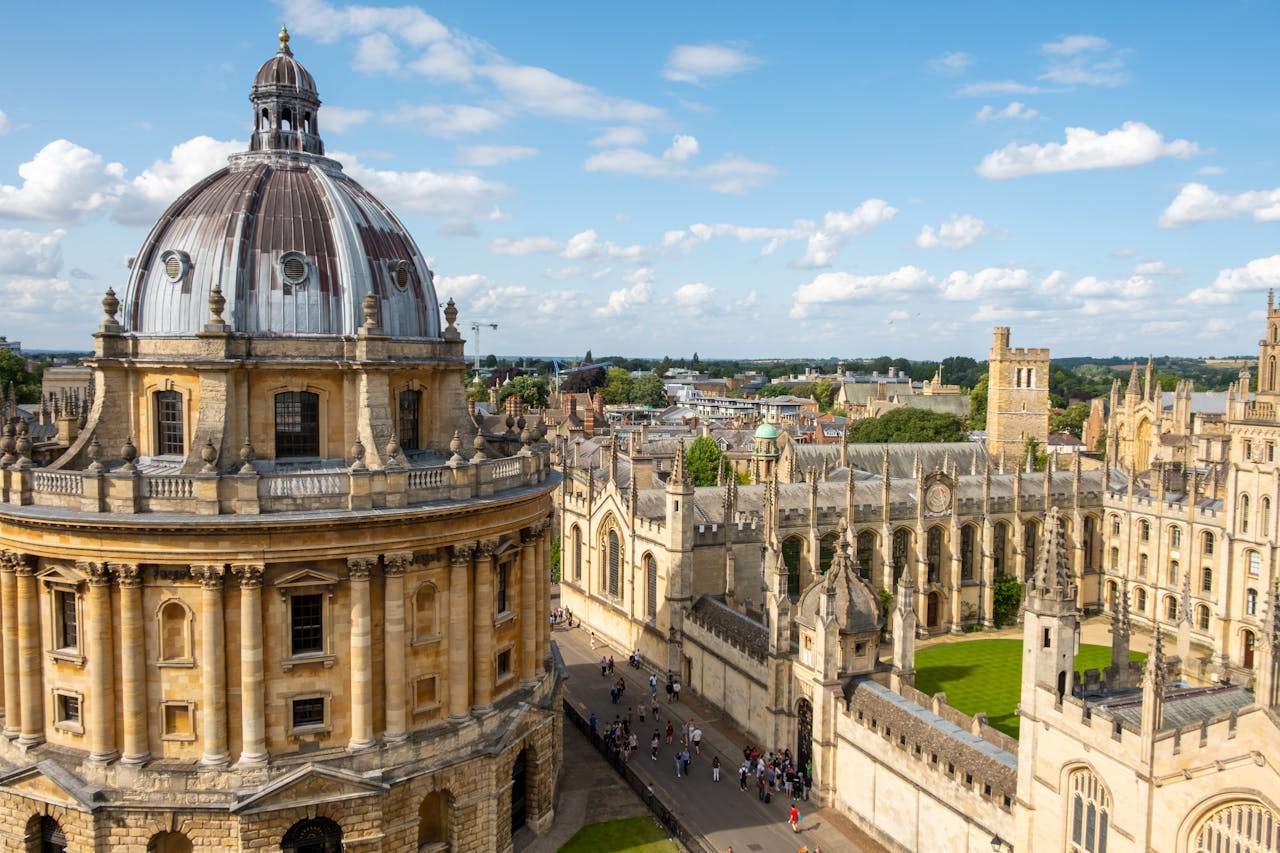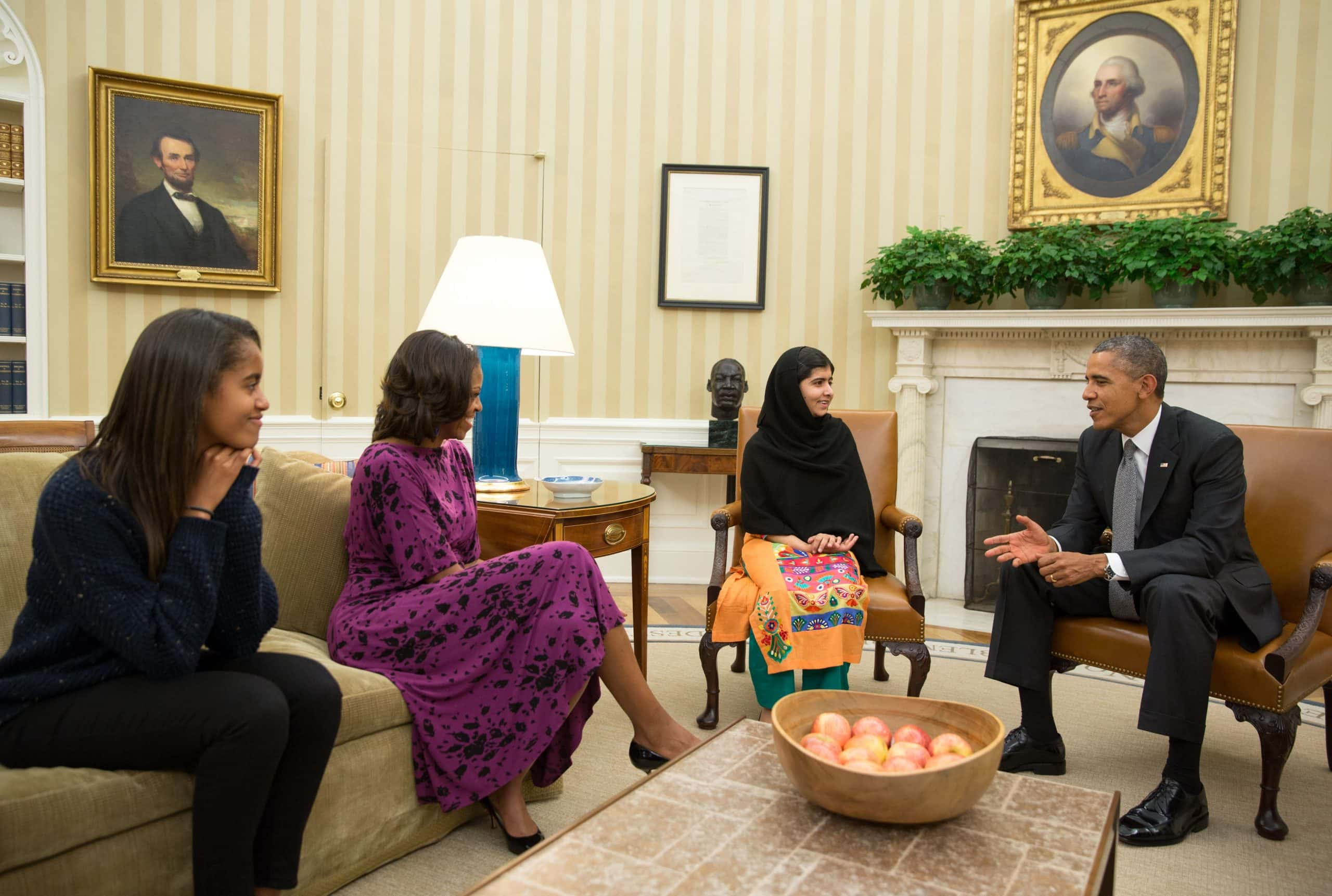Though only 20 years old, children’s rights activist and Nobel Peace Prize laureate Malala Yousafzai seems to have already lived multiple lives. Born in Mingora, Pakistan, she bravely defied the Taliban when the group swept into the Swat Valley. In response to her public campaign for education rights, she was shot by a Taliban gunman in 2012. Malala survived to continue her own schooling and to resume her advocacy of children’s education rights. Winner of numerous awards for her international public service, Malala is also a writer, speaker, and activist with the foundation that bears her name. Here are 42 facts you might not know about Malala.
Malala Yousafzai Facts
01. What’s in a Name?
Malala’s bold spirit is embodied in the story of her namesake, Malalai of Maiwand, a female Pashtun warrior who helped defeat the British in 1880 during the Second Anglo-Afghan War. The name Malala means “grief-stricken.”
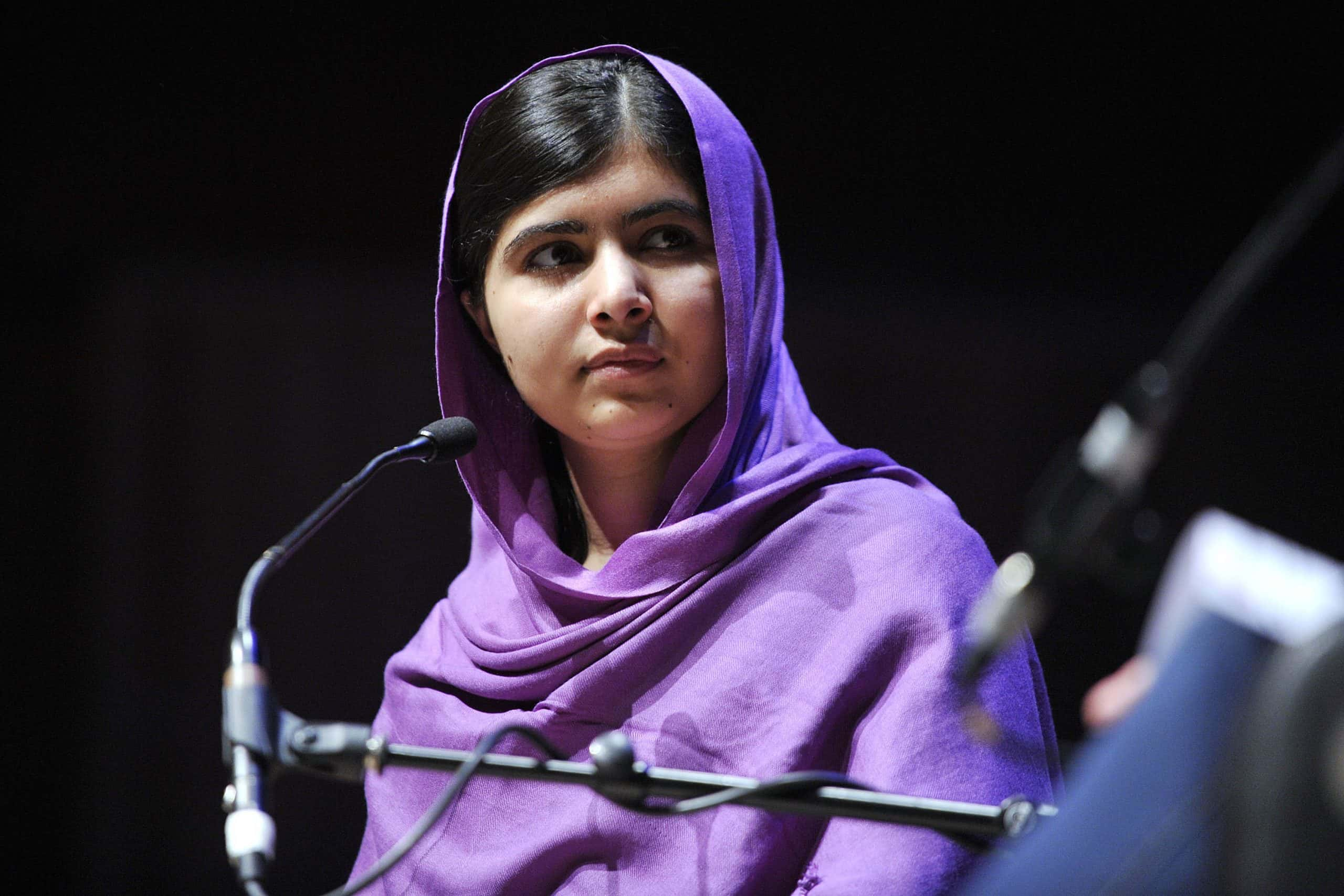 Southbank Centre, CC BY 2.0, Wikimedia Commons
Southbank Centre, CC BY 2.0, Wikimedia Commons
02. School of Life
Malala’s love for learning began at an early age when, even as a toddler, she would accompany her father Ziauddin to the Khushal School, which he ran. Ziauddin, a poet and community activist, named the school for a Pashtun warrior-poet, and was a staunch advocate of education for girls, and ardent supporter of his daughter’s aspirations.
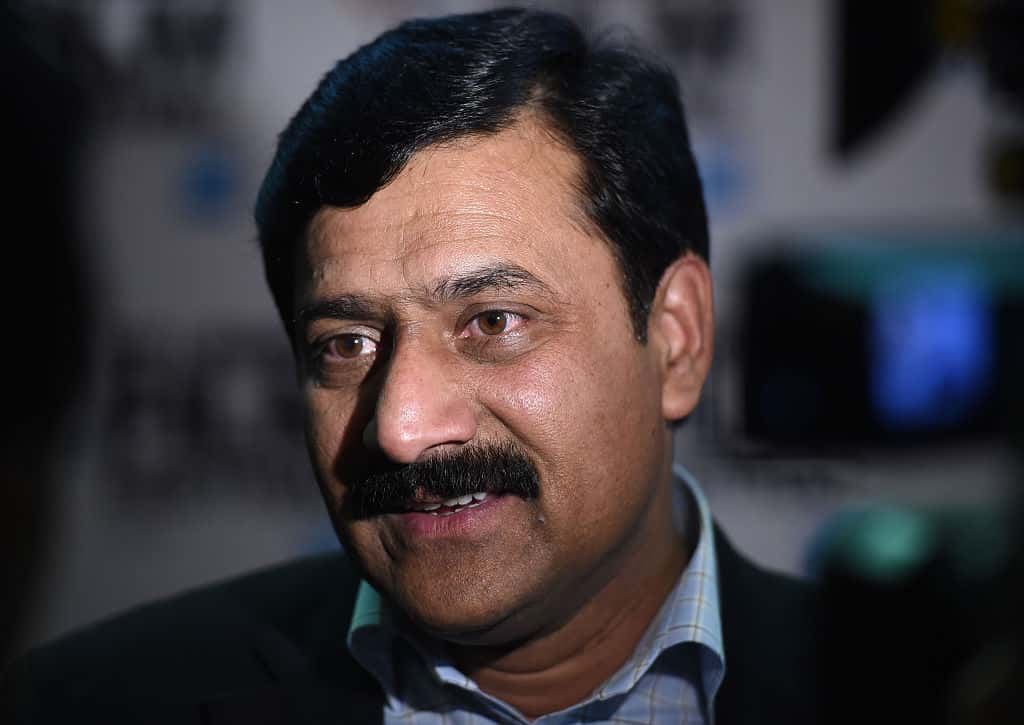 Stuart C. Wilson, Getty Images
Stuart C. Wilson, Getty Images
03. Her Favorite Things
When she was 11, Malala read Stephen Hawking’s A Brief History of Time to distract herself from her fear of the Taliban. Malala cites The Alchemist by Paulo Coelho as her favorite book, but also enjoyed the popular Twilight Saga by Stephenie Meyer. Despite her intellectual interests, her favorite TV show during her pre-adolescence was a reality show called My Dream Boy Will Come to Marry Me.
04. Her Father’s Daughter
Malala and her father shared a special relationship, and she spoke candidly to him about her observations of life in the Pashtun culture. From an early age, Malala queried her father about customs relating to the treatment of women, including the common practice of wife beating, kidnapping, and swara, a practice by which men resolved conflicts by exchanging women. Her father agreed with Malala about these customs and always encouraged her to stand up for her rights.
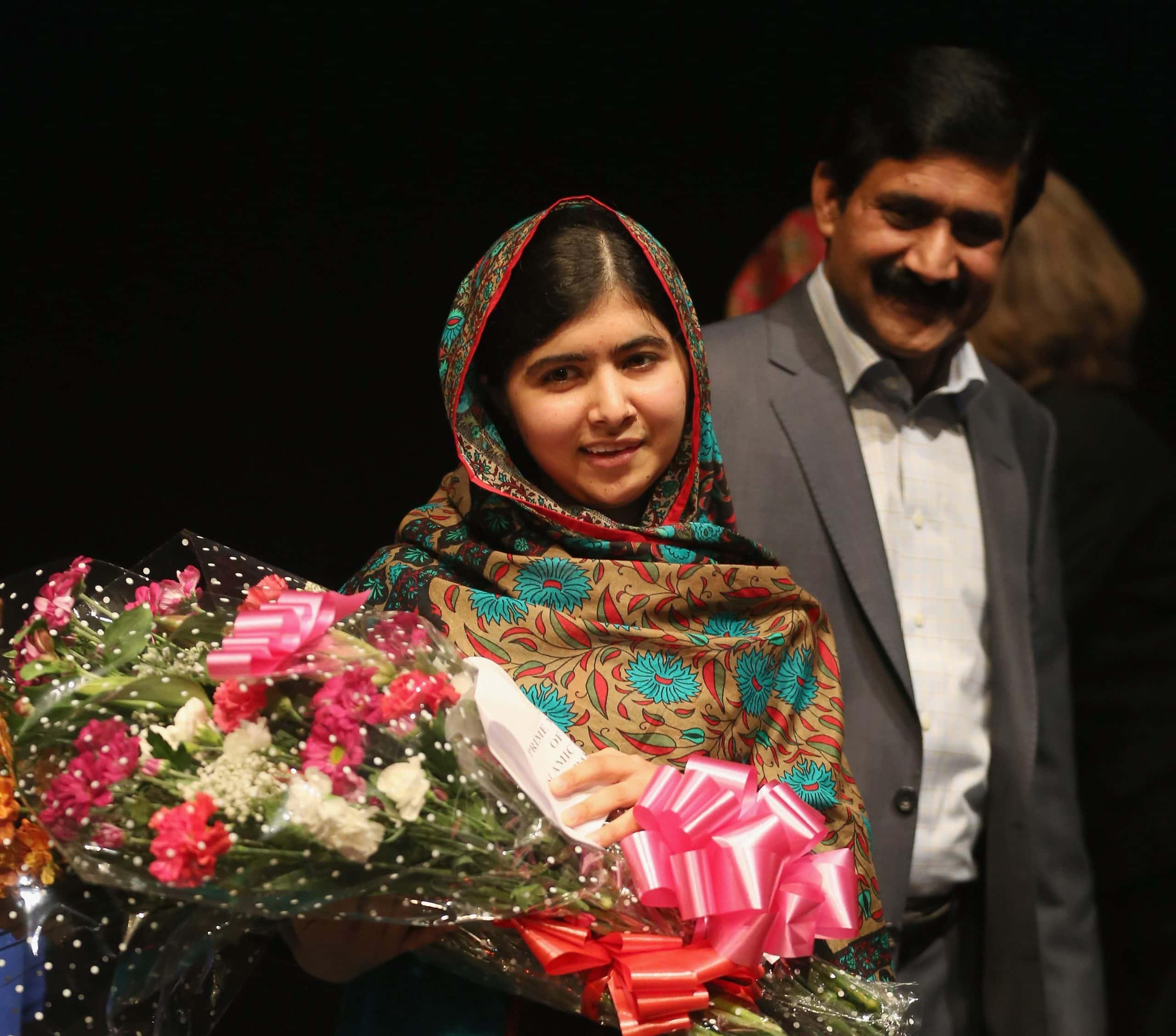 Christopher Furlong, Getty Images
Christopher Furlong, Getty Images
05. Petty Thief
She may have a saintly reputation now, but Malala enjoyed some success as a young thief, stealing jewellery and trinkets from a girl in her class. In her autobiography I Am Malala, she confesses that while it was a thrill at first, it developed into a compulsion until she was caught and forced to stop.
06. Speaking Out
Malala was only 11 years old when she gave a speech at the press club in Peshawar entitled “How Dare the Taliban Take Away My Basic Right to Education?” It was 2008, and the Taliban had begun to take control in the Swat Valley, shutting down schools for girls. Some criticized her father for bringing her to the forum, but, as always, Ziauddin supported his daughter’s determination to be heard.
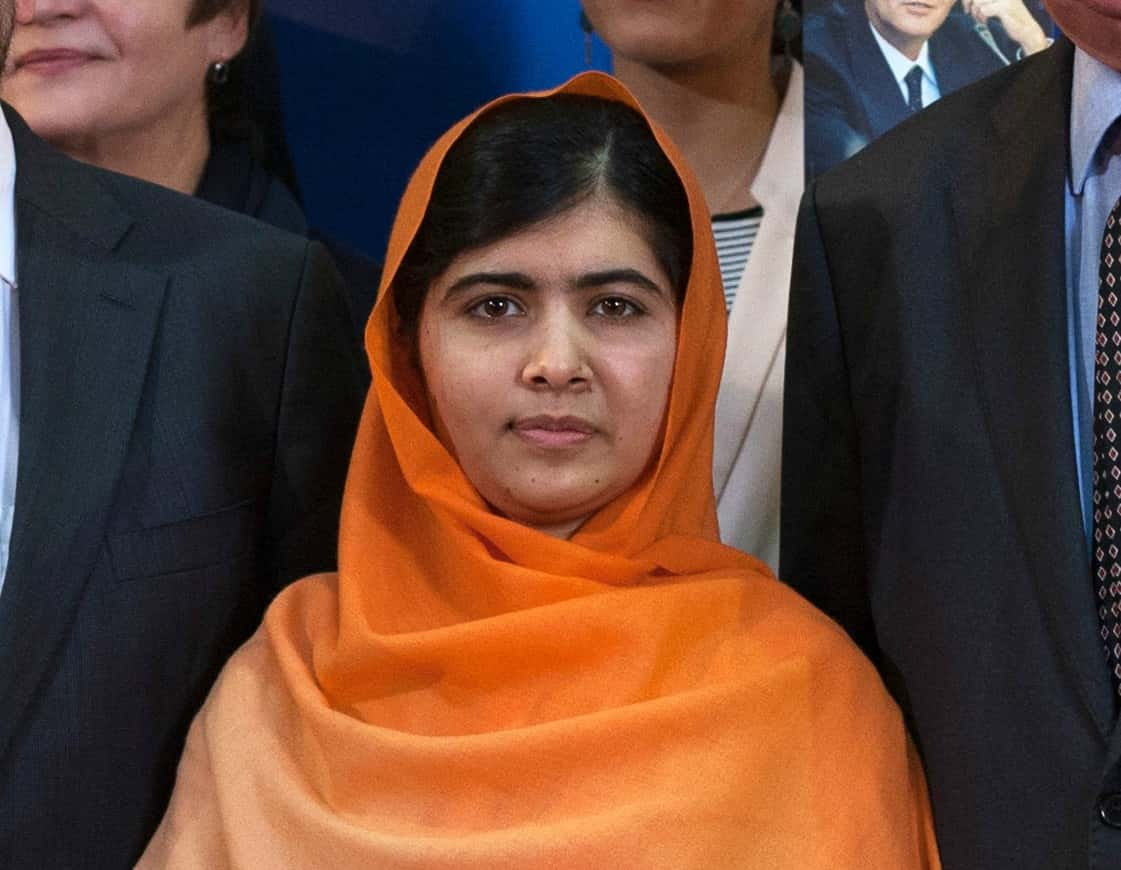 Claude Truong-Ngoc, CC BY-SA 3.0, Wikimedia Commons
Claude Truong-Ngoc, CC BY-SA 3.0, Wikimedia Commons
07. Blood Suckers
When Malala first encountered members of the Taliban with their extremely long beards and intimidating black turbans, she thought of them as being like the vampires in the Twilight Saga she enjoyed reading.
08. Inspiration
In contrast to Malala’s precocious literacy, her mother Tor Pekai “began and finished school at the age of six,” according to her daughter’s autobiography. However, inspired by Malala and hoping to expand her horizons in England, where the family now lives, Tor Pekai began to attend school, and she is now able to read and write English.
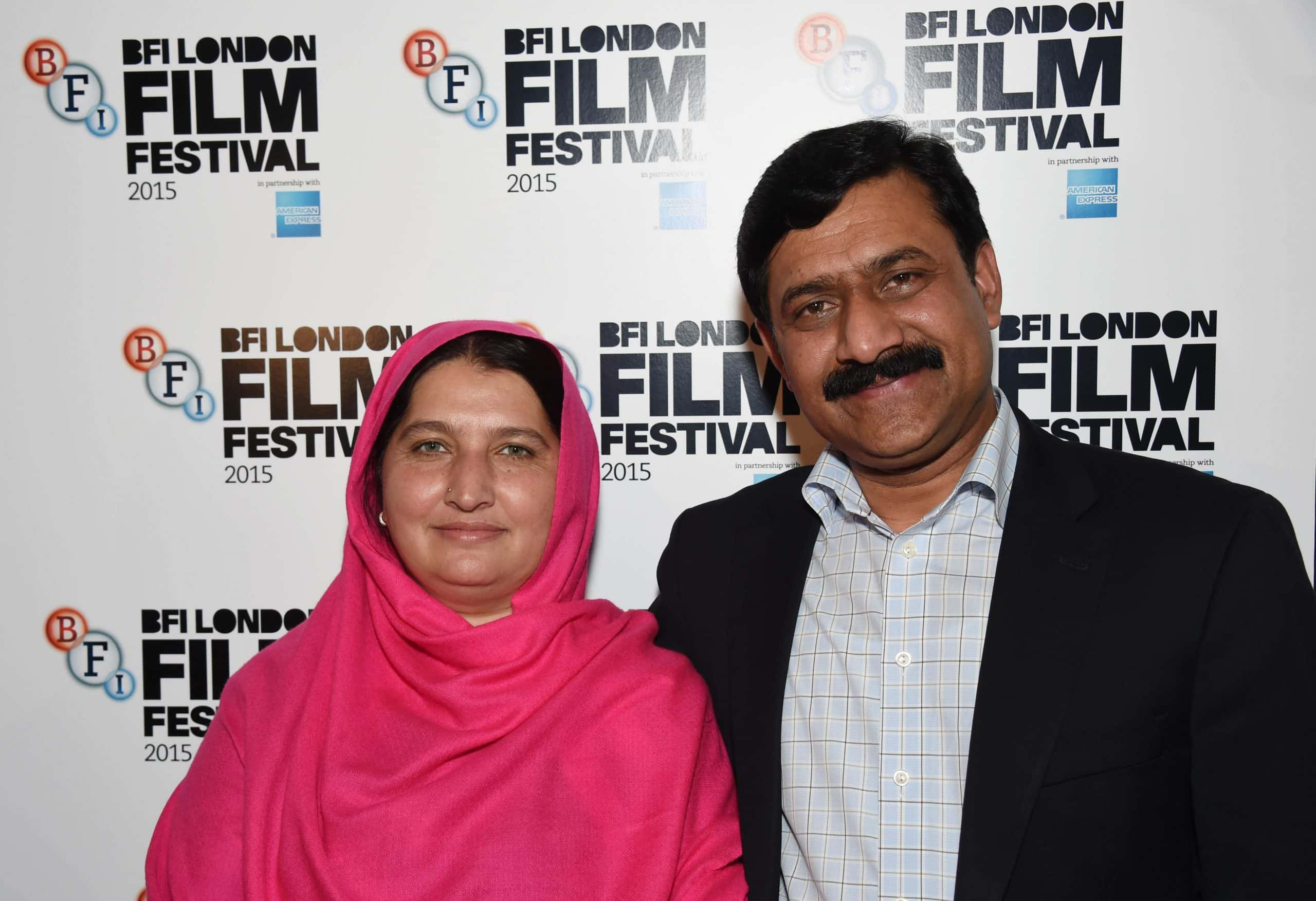 Stuart C. Wilson, Getty Images
Stuart C. Wilson, Getty Images
09. Dangerous Mission
In 2008, as world attention was drawn to the Taliban’s takeover of the Swat Valley, the BBC wanted to find a schoolgirl to blog about her firsthand experience of life under the extremist group. Malala’s father was approached for a recommendation. When the first girl chosen declined the job for safety reasons, Malala volunteered. She wrote under the pen name Gul Makai; Gul Makai was a heroine from a Pashtun folktale, and the name means “cornflower.”

History's most fascinating stories and darkest secrets, delivered to your inbox daily.
10. Cold Fear
Malala’s first blog post for the BBC was entitled “I Am Afraid.“ In the post she wrote, “I had a terrible dream yesterday with military helicopters and the Taliban.” Her own class at school had dwindled from 27 students to 11. One day on the way home from school, she was terrified when she heard the voice of a man saying, “I will kill you.” He was speaking on his cell phone to someone else, but she believed in that moment that he was talking to her.
11. The Last Holdouts
By the end of 2008, more than 400 schools, mostly for girls, had been destroyed by the Taliban. Malala continued to attend her father’s school until he was ordered to close it by the local Taliban leader, Maulana Fazlullah.
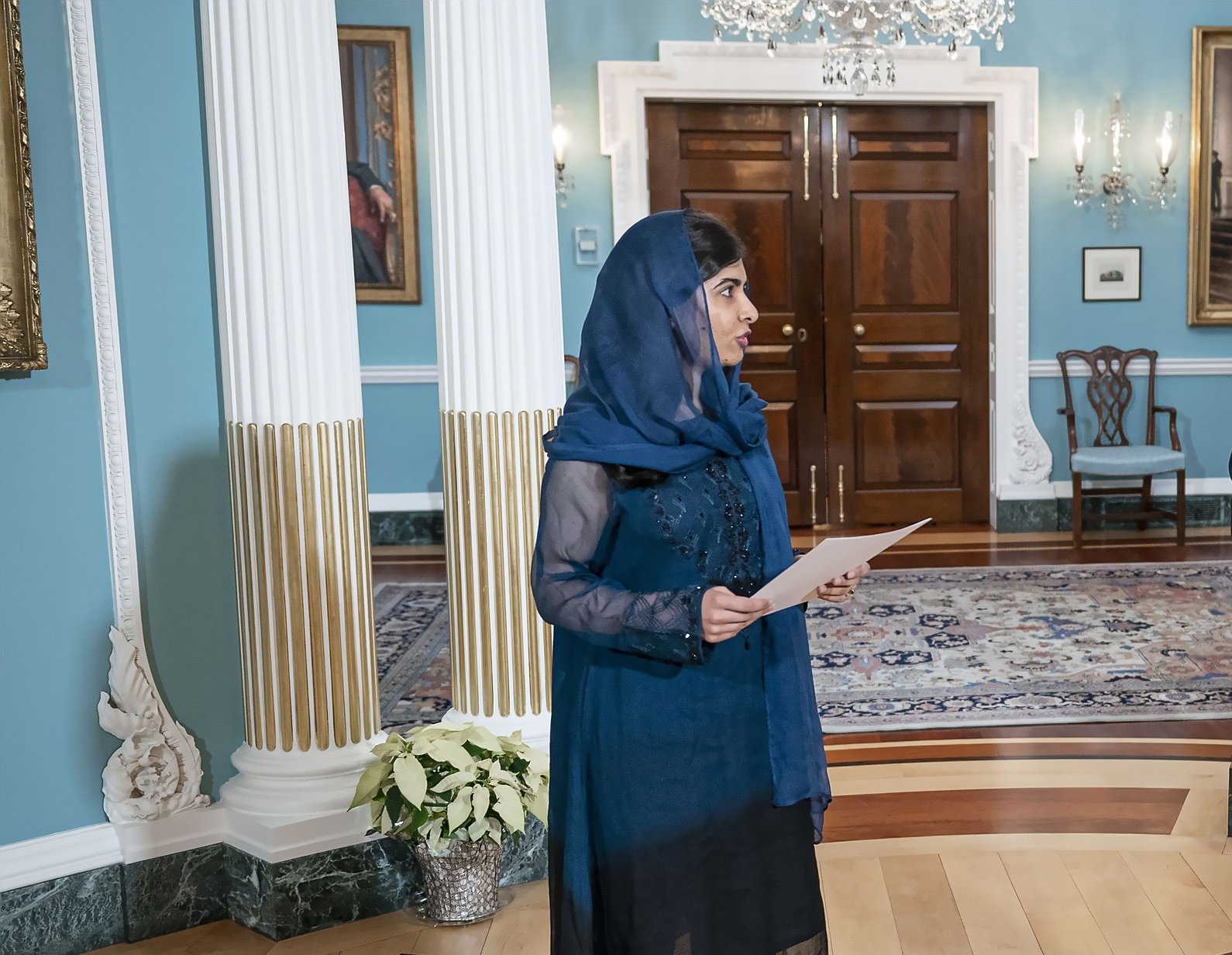 U.S. Department, Wikimedia Commons
U.S. Department, Wikimedia Commons
12. Interlude of Peace
After the Taliban were partially routed by the Pakistani army in 2009, Malala enjoyed acclaim for her courageous advocacy for the rights of children. Some rebuilt schools were named after her. In 2012, she received the National Youth Peace Prize.
13. Class Dismissed
Malala’s participation in a New York Times documentary filmed in 2009 about the closing of the last girls’ schools in the Swat Valley infuriated the Taliban. Her campaign for girls’ education was characterized by Taliban spokesman Ehsanullah Ehsan as an“obscenity.”
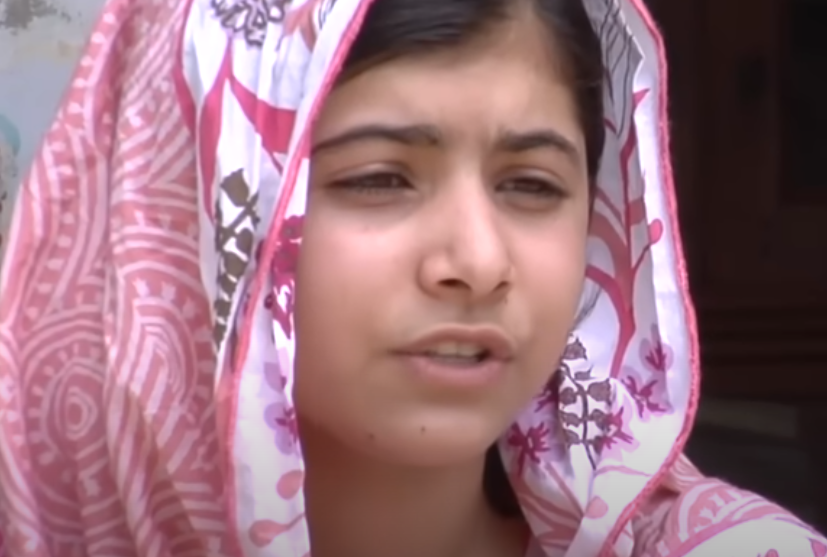 NYT, A Schoolgirl's Odyssey (2009)
NYT, A Schoolgirl's Odyssey (2009)
14. We Are Warning You
Malala began to receive death threats in an attempt by the Taliban to silence her. Some of the threats appeared in newspapers, and some were actually delivered under the door of her home.
15. “Let This Be a Lesson”
There was “no other option” but to kill Malala, claimed Taliban spokesman Sirajuddin Ahmad after the attempted assassination on October 9, 2012. On that day, a militant boarded her school bus, sought her out by name, and shot her in the head, critically injuring her. “She has become a symbol of Western culture in the area; she was openly propagating it,” asserted another spokesman. He vowed that the Taliban would kill her if she survived, warning, “Let this be a lesson.” Two other young girls were also wounded in the attack. Malala was 15 years old.
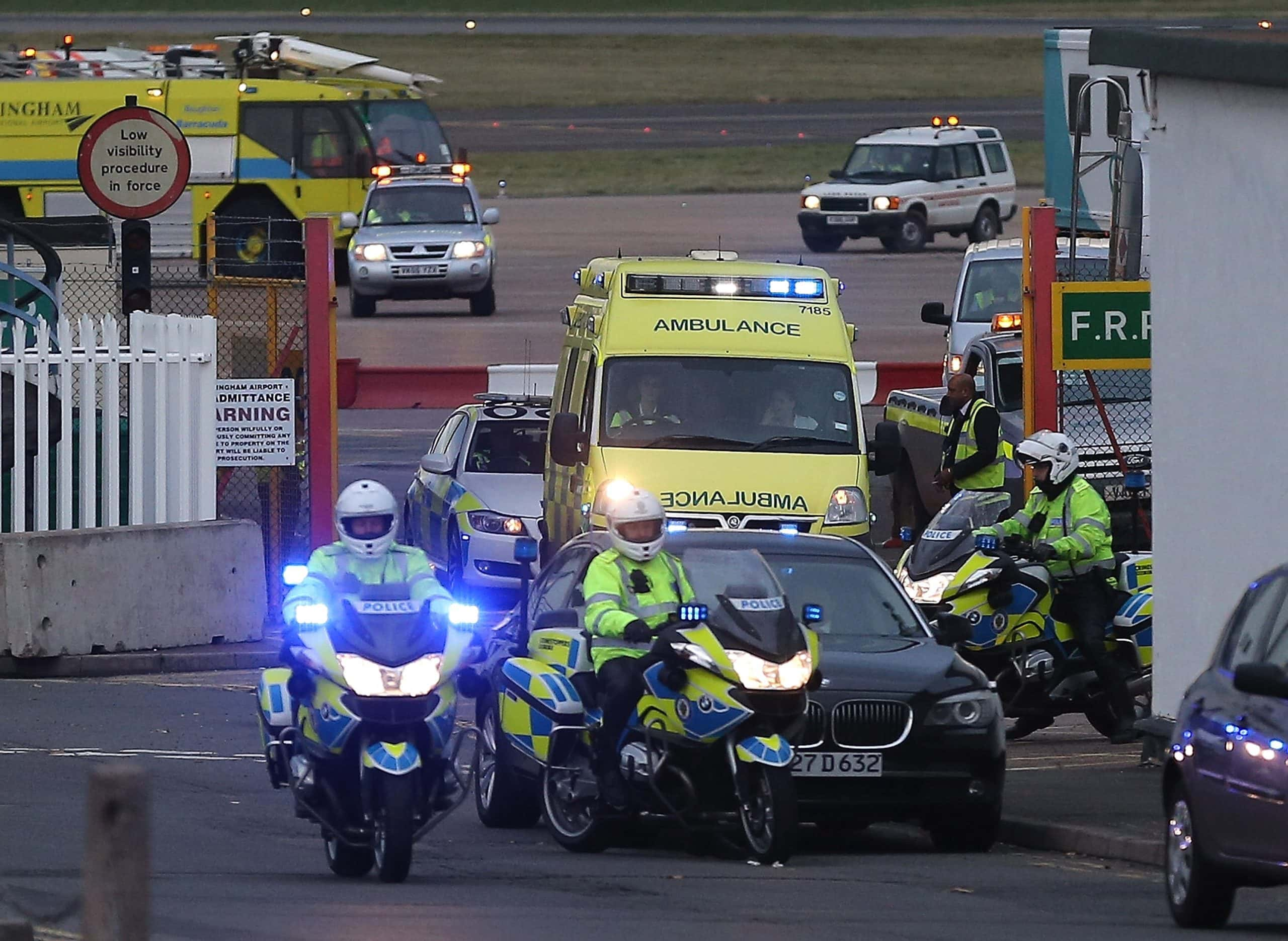 Christopher Furlong, Getty Images
Christopher Furlong, Getty Images
16. Within an Inch of Her Life
The one bullet that struck Malala hit her head and then traveled down her face into her shoulder. She was ultimately evacuated to a special pediatric unit in Queen Elizabeth Medical Center in Birmingham, England. During the whole process, part of her skull was removed so that her brain could swell. Doctors reported that the bullet came within inches of taking her life.
17. Funeral Arrangements
Malala’s father actually began to make plans for her funeral in the days after her attack. He would later characterize her recovery as a "miracle," saying that she survived because there were angels on his side.
18. Somewhere Over the Rainbow
Reading The Wonderful Wizard of Oz helped Malala deal with headaches and lack of focus as she recovered. She has written that Dorothy’s quest to return home mirrored her journey towards wellness. The book was one of 25 books bestowed on her by former British Prime Minister Gordon Brown.
19. Bounty
Worldwide condemnation of the Taliban followed the attack. Pakistani provincial officials offered a reward of US$100,000 to the person who could capture those involved in the assault.
20. A Celestial Tribute
In 2015, an asteroid was named in honor of Malala. The asteroid, which orbits between Mars and Jupiter, was discovered by NASA astronomer Amy Mainzer. The asteroid is officially dubbed 316201 Malala.
21. Youngest Ever
Malala is the youngest person to ever receive the Nobel Peace Prize. In 2014, she shared the prestigious honor with Indian children’s rights advocate Kailash Satyarthi "for their struggle against the suppression of children and young people and for the right of all children to education.” At the awards ceremony in Oslo, Malala said that she’s probably the first Nobel Peace Prize recipient “who still fights with her younger brothers.”
22. Material Girl and Malala
Madonna even offered a (somewhat tone deaf) tribute to Malala just after the Taliban attack. At a concert during her MDNA tour, the pop star stripped off her shirt and rolled down her pants to reveal the name “Malala” written across her back. She then dedicated the next song, “Human Nature,” to the children’s rights activist.
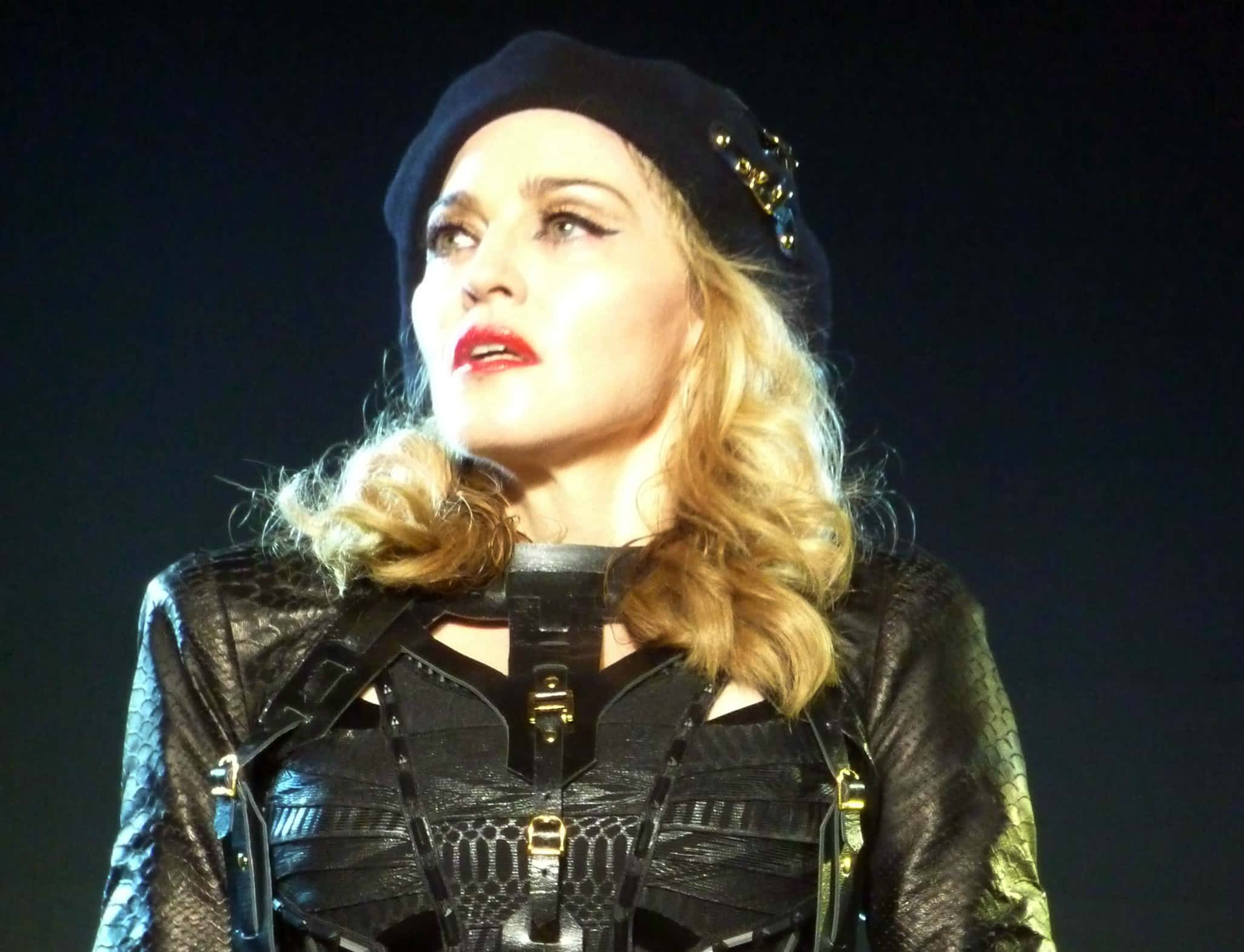 Jon Haywood, CC BY 2.0, Wikimedia Commons
Jon Haywood, CC BY 2.0, Wikimedia Commons
23. Funding the Future
After Malala’s recovery, she and her father founded the Malala Fund, the goal of which is to support “every child’s right to 12 years of free, safe, quality education.” The Fund’s first grant was used to provide schooling for 40 girls from Malala’s village so they would not be forced into domestic labor.
24. Sphere of Influence
In 2013, Malala was named by Time Magazine as one of the “Most Influential People of the Year.” Others on the list that year included: Pope Francis, Barack and Michelle Obama, Steven Spielberg, Jay Z, and Beyoncé. The following year she was listed as one of Time's “Most 25 Influential Teens.”
25. Youth Takeover
Malala gave a powerful speech at the United Nations Youth Takeover in which she openly defied extremists and advocated for free education for children around the world. She finished her speech with the rousing words: “One child, one teacher, one pen and one book can change the world. Education is the only solution. Education First.”
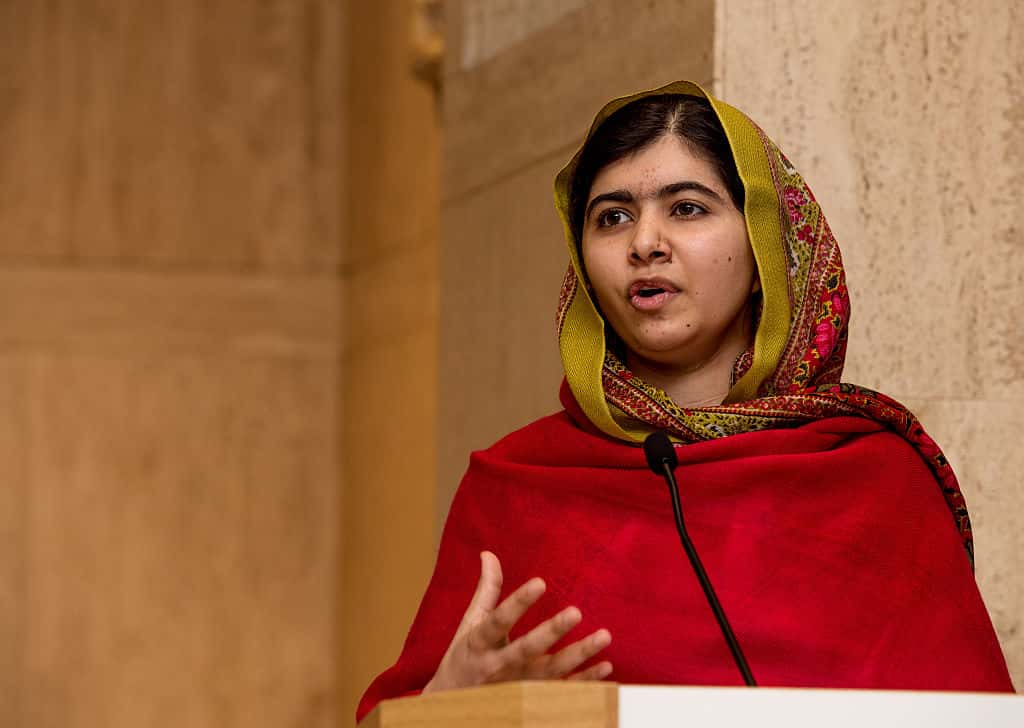 Richard Stonehouse, Getty Images
Richard Stonehouse, Getty Images
26. Story of a Life
In 2013 Malala, with the help of British journalist Christina Lamb, published her autobiography, I Am Malala: The Girl Who Stood Up for Education and Was Shot by the Taliban, which covers her life from childhood to the attempt on her life in 2012.
27. A Banner Year
Also in 2013, Malala received the Sakharov Prize for Freedom of Thought. That same year she also received the International Children’s Peace Prize.
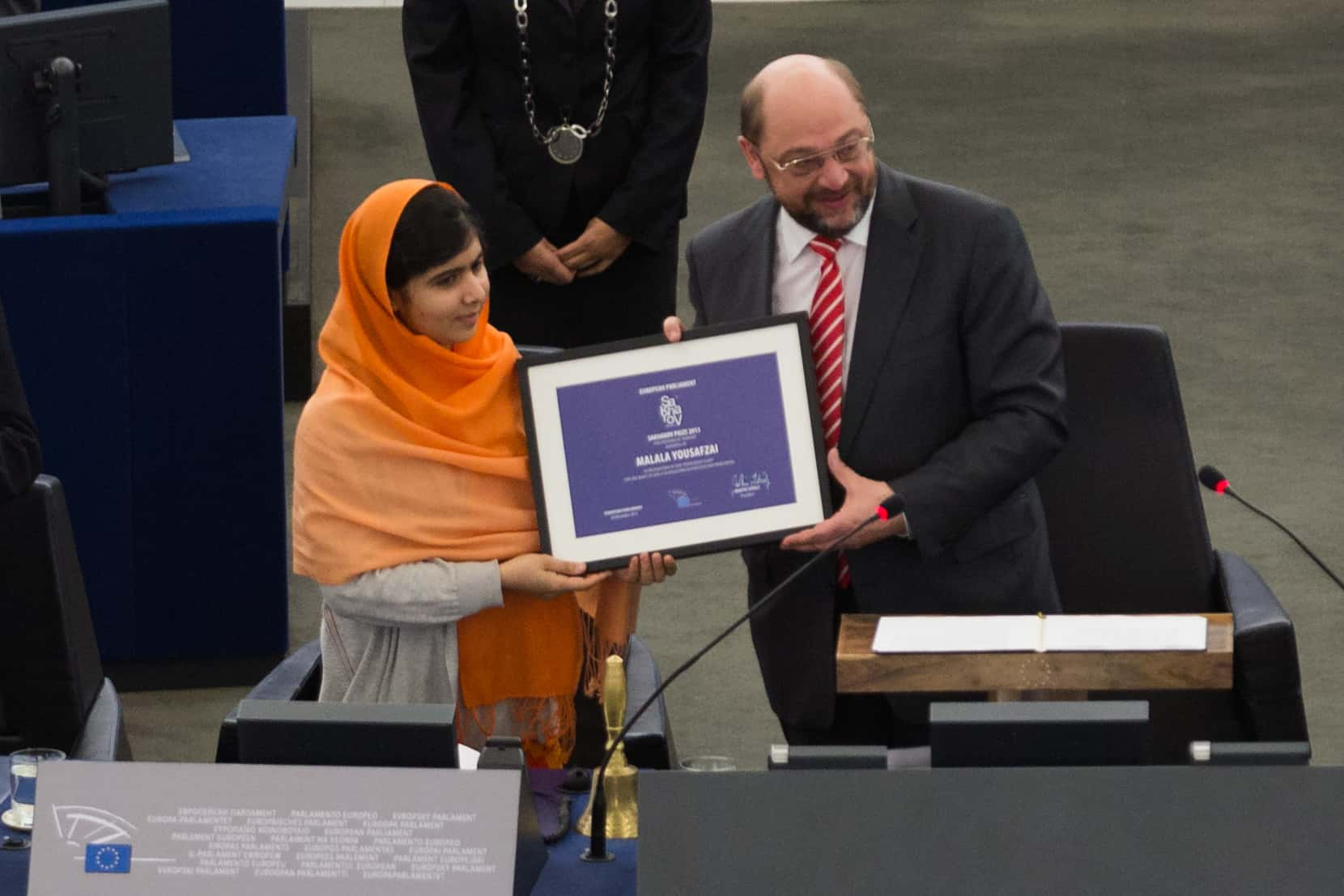 Claude Truong-Ngoc, CC BY-SA 3.0, Wikimedia Commons
Claude Truong-Ngoc, CC BY-SA 3.0, Wikimedia Commons
28. Doctor Yousafzai
Malala has already received an honorary Master of Arts degree from the University of Edinburgh (2013) and two Honorary Doctorate degrees from King's College in Halifax, Canada and the University of Ottawa, Canada.
29. In Good Company
In 2017, Malala became the youngest person to address a joint session of the Canadian Parliament and the youngest to receive honorary citizenship from the country. Other recipients of this rare honor include Nelson Mandela, the Dalai Lama, Aung San Suu Kyi, Raoul Wallenberg, and the spiritual leader Karim Aga Khan IV.
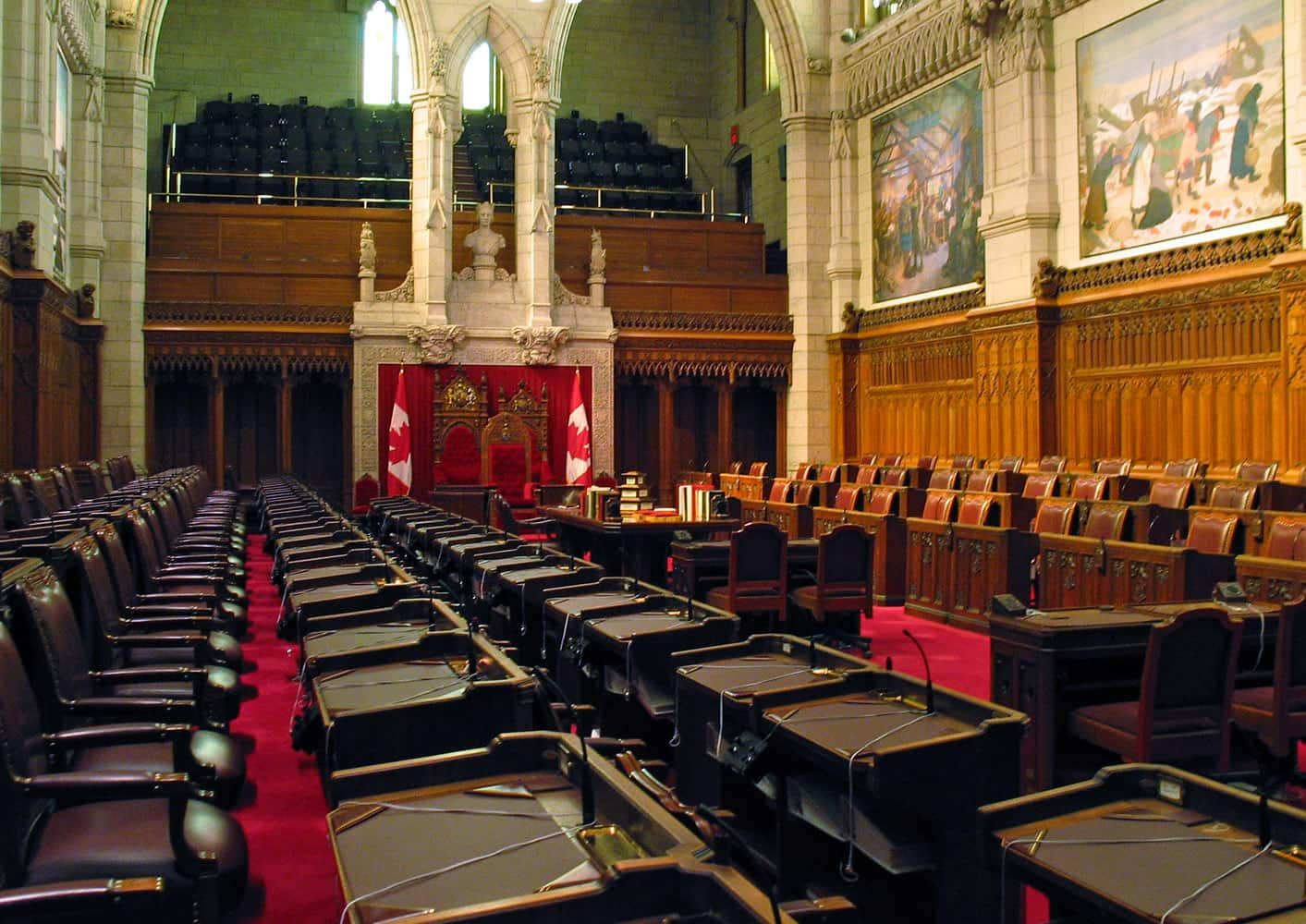 Sergey Ashmarin, CC BY-SA 3.0, Wikimedia Commons
Sergey Ashmarin, CC BY-SA 3.0, Wikimedia Commons
30. Messenger of Peace
Once again Malala broke the age barrier when she became the youngest Messenger of Peace, the highest honor awarded by the United Nations.
31. Picturing a Better World
In 2017, Malala’s first children's picture book was published. Entitled Malala’s Magic Pencil, the book reflects on the author’s childhood wish for an enchanted pencil with which she could erase the ills of the world and recreate it as a better place.
32. Grammy Award
In 2015, the audio version of Malala’s memoirs I Am Malala was awarded a Grammy for Best Children’s Album. The narration was recorded by award-winning children’s book author Neela Vaswani.
33. Fashion Icon
Malala has also inspired the fashion world. Fashion accessory brand TOMS® created a scarf inspired by the activist and her work. The scarf features an Islamic-style print along with Malala’s iconic quote: "One child, one teacher, one book and one pen can change the world." All proceeds from scarf purchases go directly to the Malala Fund.
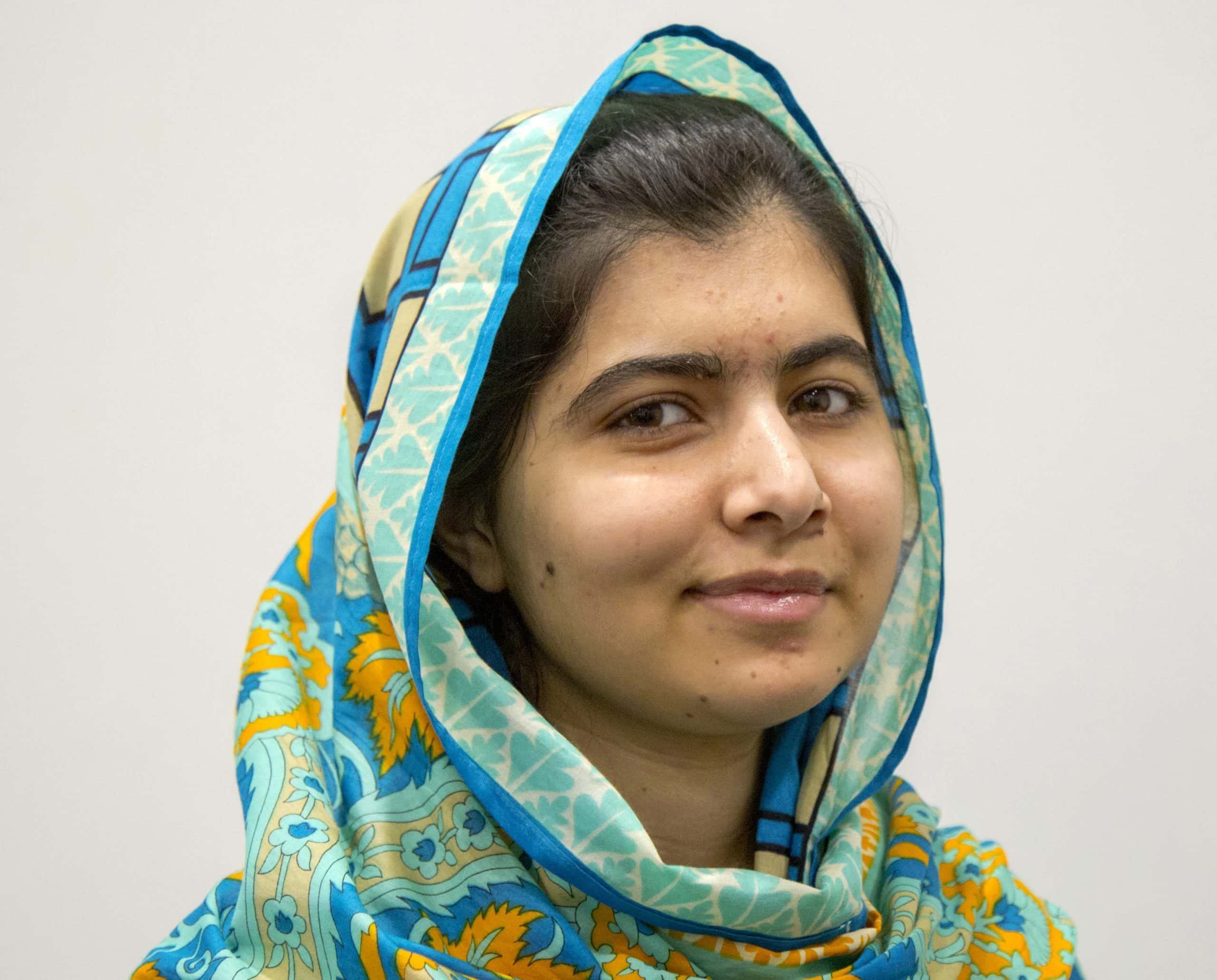 DFID - UK, CC BY 2.0, Wikimedia Commons
DFID - UK, CC BY 2.0, Wikimedia Commons
34. Boys Not Allowed
When queried about her new life in Britain, Malala remarked that she could never be like her typical English counterparts. She said that she would always defer to the wishes of her father, who, though a fierce advocate of his daughter’s rights, was still culturally “a Pashtun father.” This meant that she could not use a cell phone, was expected to always wear a headscarf in public, and could not have a boyfriend.
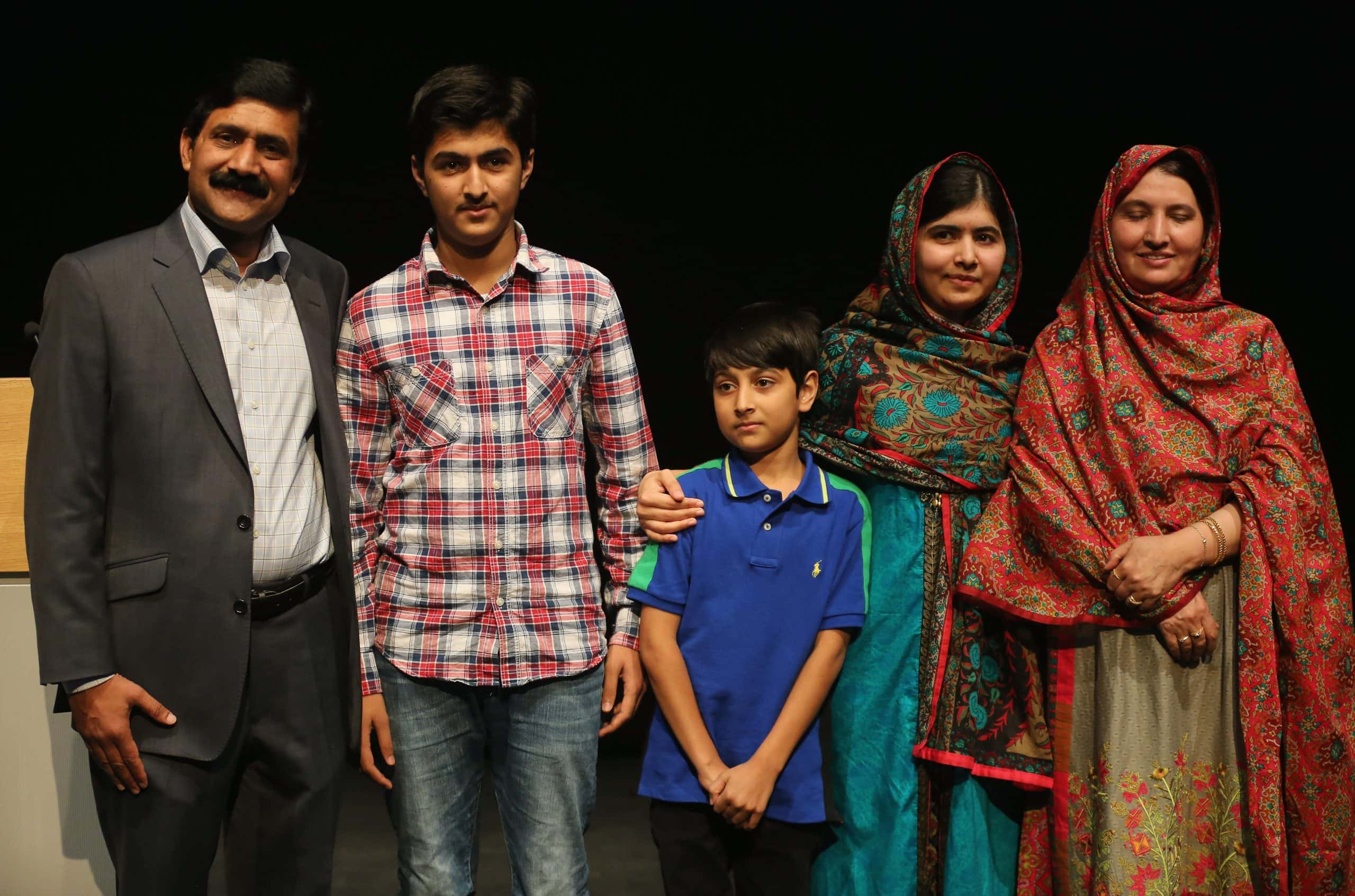 Christopher Furlong, Getty Images
Christopher Furlong, Getty Images
35. Uncommon Compassion
Despite the terror Malala suffered in the attempt on her life, she has stated that she doesn’t hate the man who shot her. “Even if there is a gun in my hand and he stands in front of me, I would not shoot him,” she avowed. She qualified that this compassion is something she learned from the teachings of Muhammad, Jesus, and the Buddha—and from her parents.
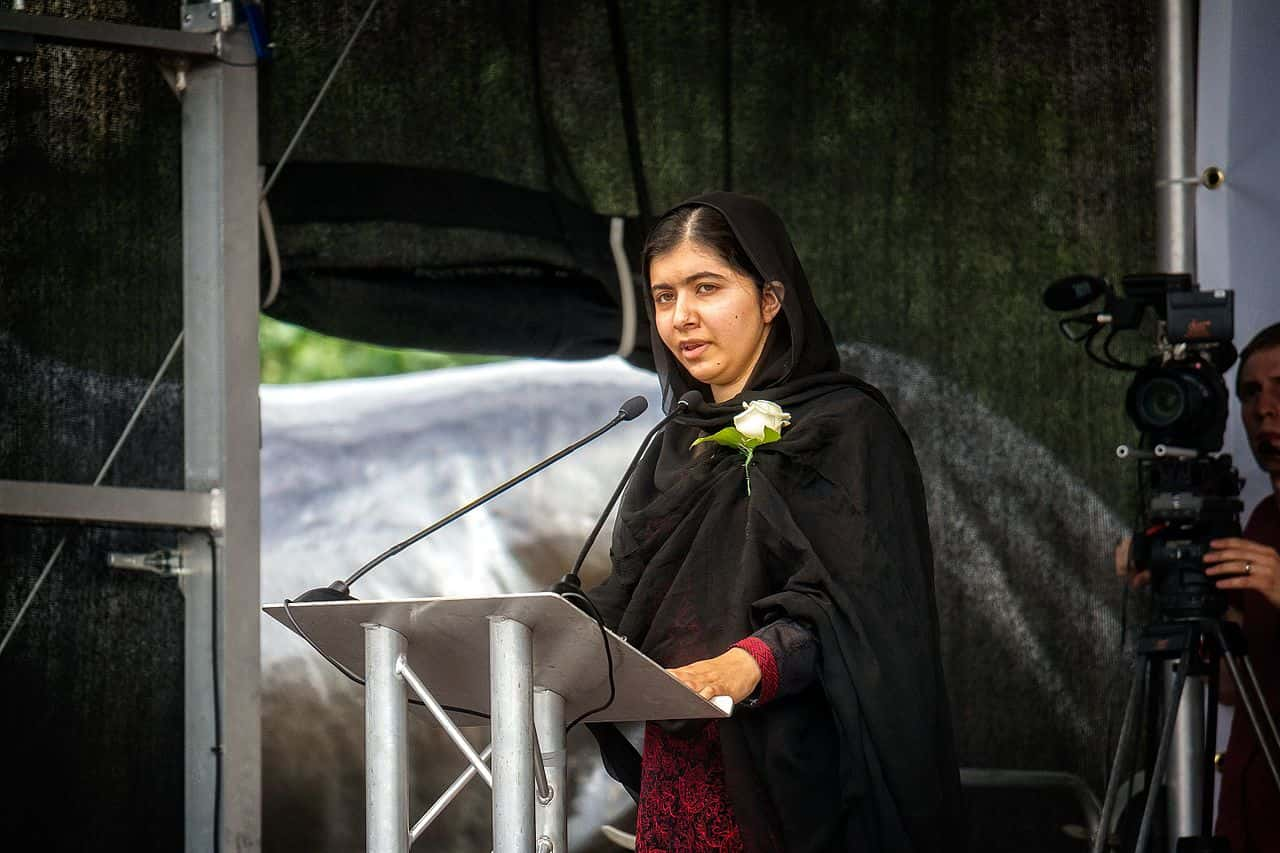 Garry Knight, Wikimedia Commons
Garry Knight, Wikimedia Commons
36. Typical Teen
Though Malala is extraordinary in many ways, she's still normal teen, and has admitted to a normal teen’s fascination with celebrities. She's Googled the images of Pakistani cricketer Shahid Afridi, actor Brad Pitt, and tennis star Roger Federer.
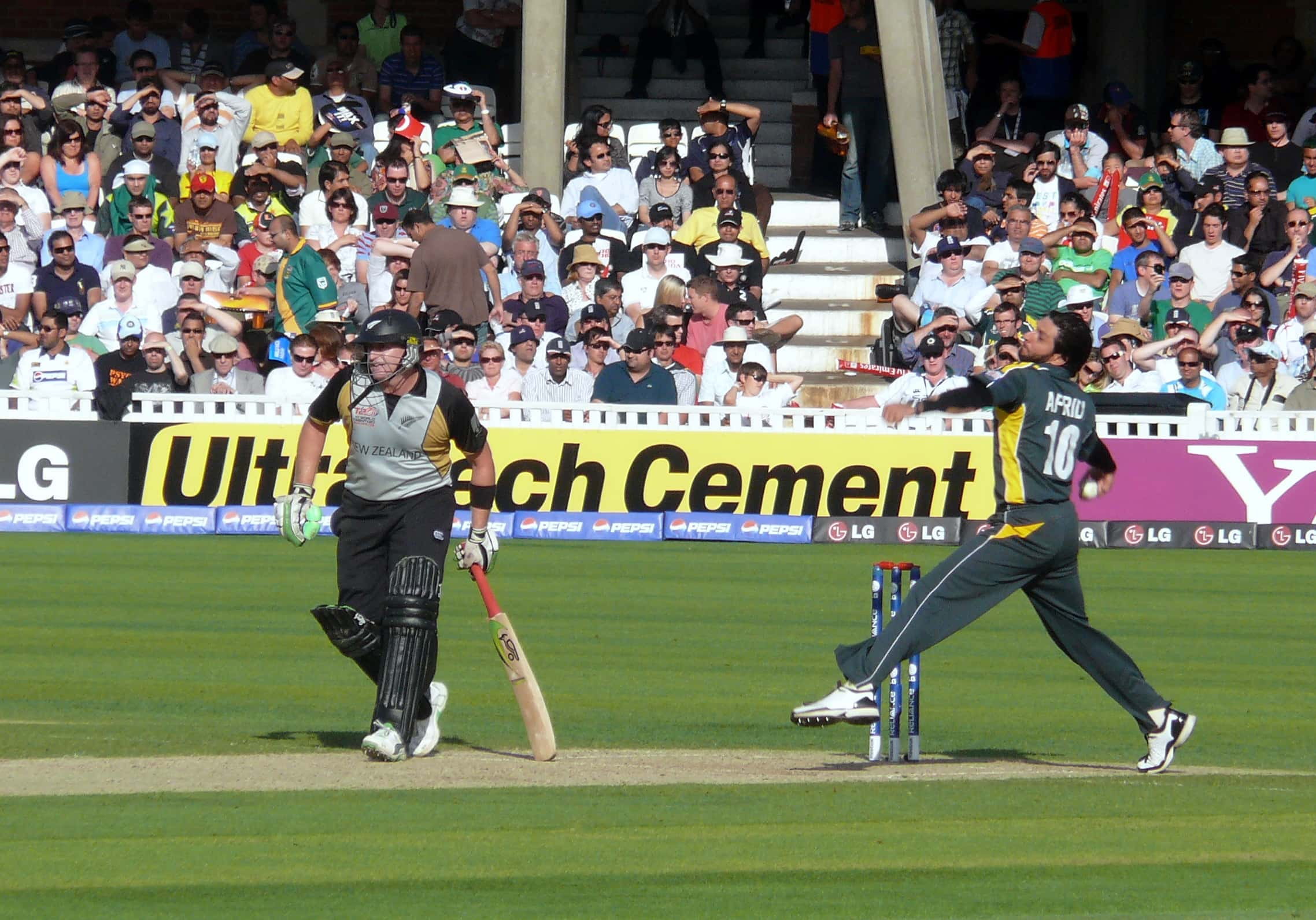 the_junes, CC BY 2.0, Wikimedia Commons
the_junes, CC BY 2.0, Wikimedia Commons
37. Documenting a Life
In 2015, He Named Me Malala, a documentary, was released. The film highlights Malala’s relationship with her father and their continued campaign for children’s educational rights. The film was shortlisted in the Best Documentary Feature category of the Academy Awards.
38. A Children’s Homage
In 2017, schoolchildren in Cubillos de Sil, a village in northwestern Spain, were given the opportunity by the City Council to name a new park in honor of a woman of their choice. They chose the world’s most famous children’s rights advocate, thereby establishing Parque Malala Makai.
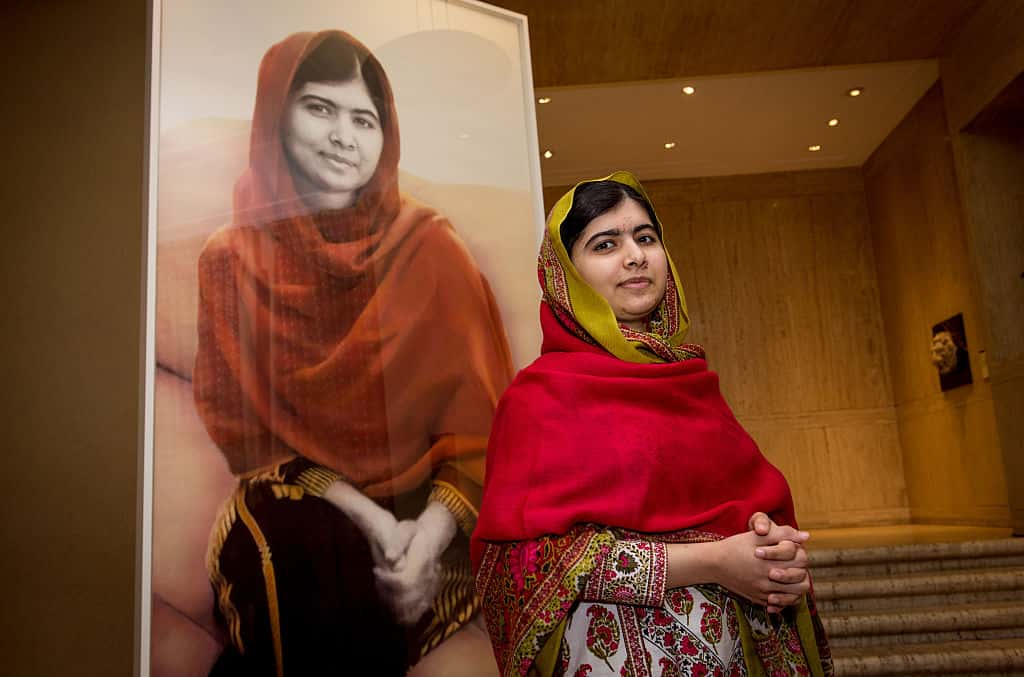 Richard Stonehouse, Getty Images
Richard Stonehouse, Getty Images
39. The Haters
Not everyone in Pakistan loves Malala. In 2014, an association of schools launched an “I Am Not Malala” day, asserting that the Nobel laureate was an agent of the West out to embarrass Pakistan. Her memoir was banned by the All Pakistan Private Schools Federation for its unpatriotic and “anti-Islam content.”
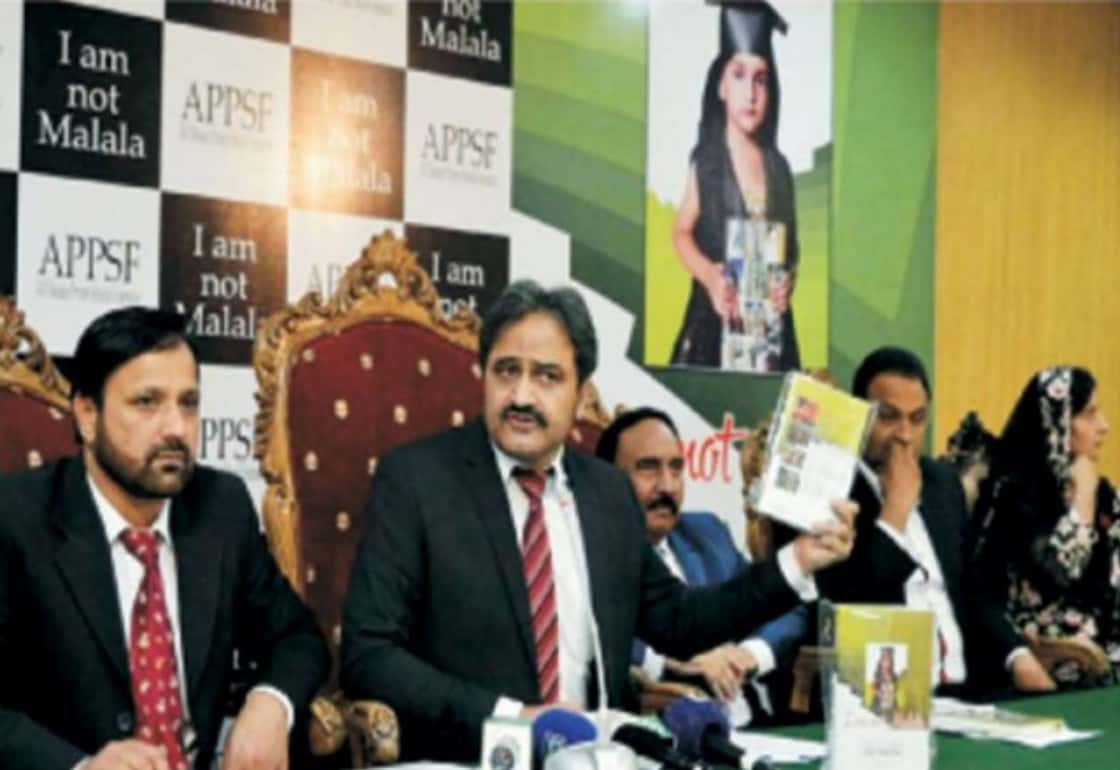 Appsf2016, CC BY-SA 4.0, Wikimedia Commons
Appsf2016, CC BY-SA 4.0, Wikimedia Commons
40. Elusive Justice
Although two people connected to the attempt on Malala’s life were sentenced by a Pakistani court to life imprisonment in 2015, eight others were acquitted with the claim that “not enough evidence was produced.” In 2017, however, the commander who ordered the attack was killed by Pakistani security forces.
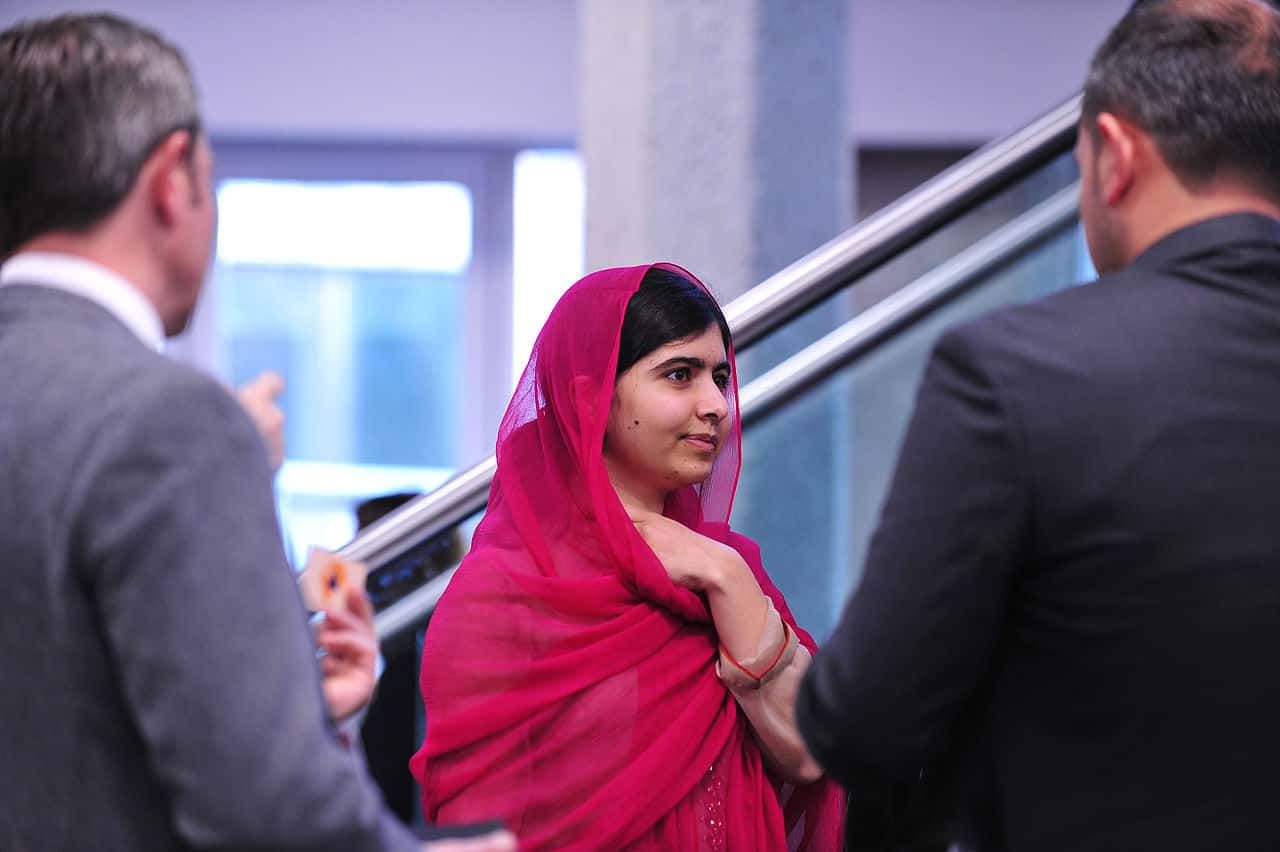 DFID - UK, CC BY 2.0,Wikimedia Commons
DFID - UK, CC BY 2.0,Wikimedia Commons
41. Happy Tweet
In the fall of 2017, Malala entered Britain’s prestigious Oxford University. Her first tweet posted from the university celebrated the moment and received over 220,000 likes within a couple of hours. Malala is focused on studying Philosophy, Politics, and Economics
42. Speaking Truth to Power
Malala not only stood up to the Taliban; she also stood up to President Obama. During a private meeting at the White House, she told him he should stop American drone attacks against militants in Pakistan. She asserted that innocent civilians were being killed and that the attacks were leading to resentment and fueling terrorism.
Sources: 1, 2, 3, 4, 5, 6, 7, 8, 9, 10, 11, 12, 13, 14, 15, 16, 17, 18, 19, 20, 21, 22, 23, 24, 25, 26, 27, 28, 29, 30, 31, 32, 33, 34, 35, 36, 37, 38, 39, 40, 41, 42, 43

